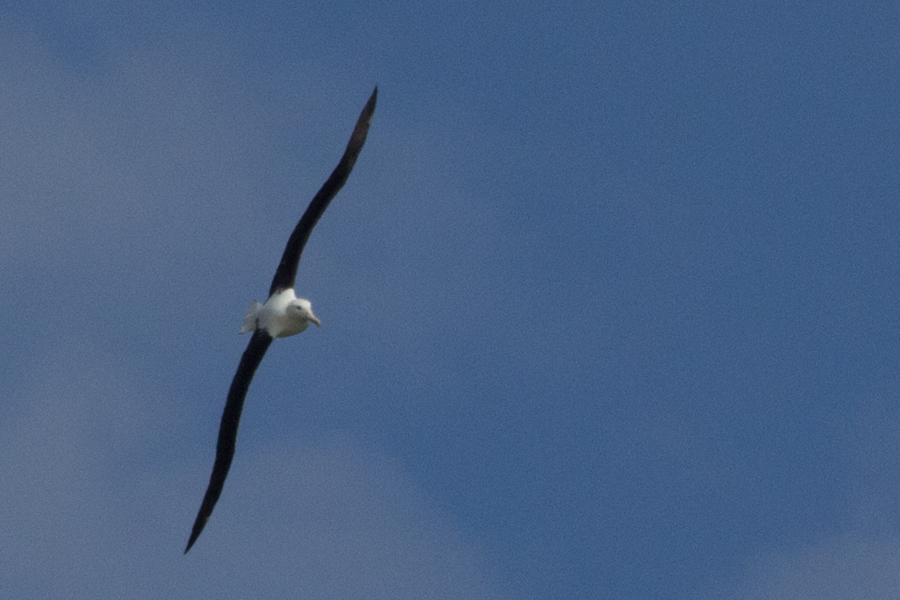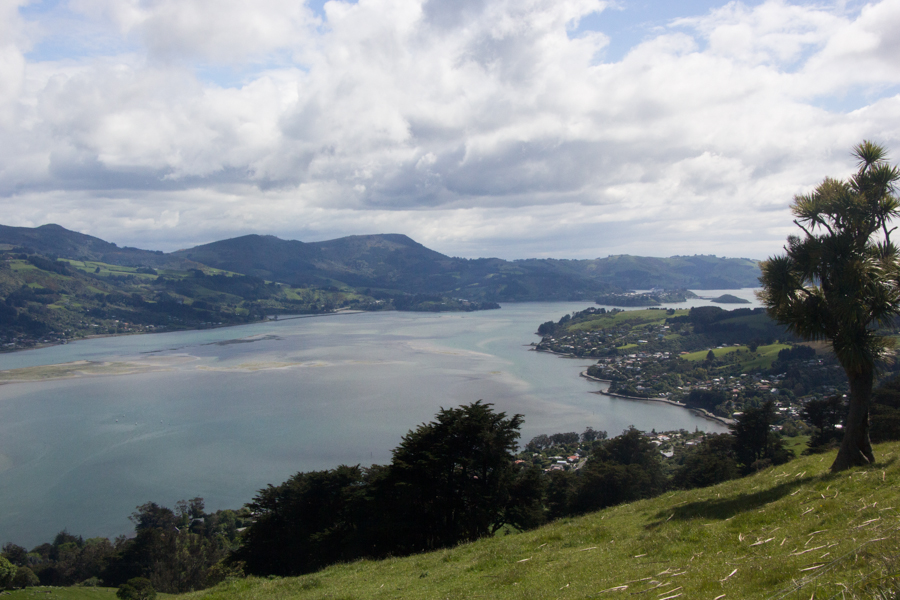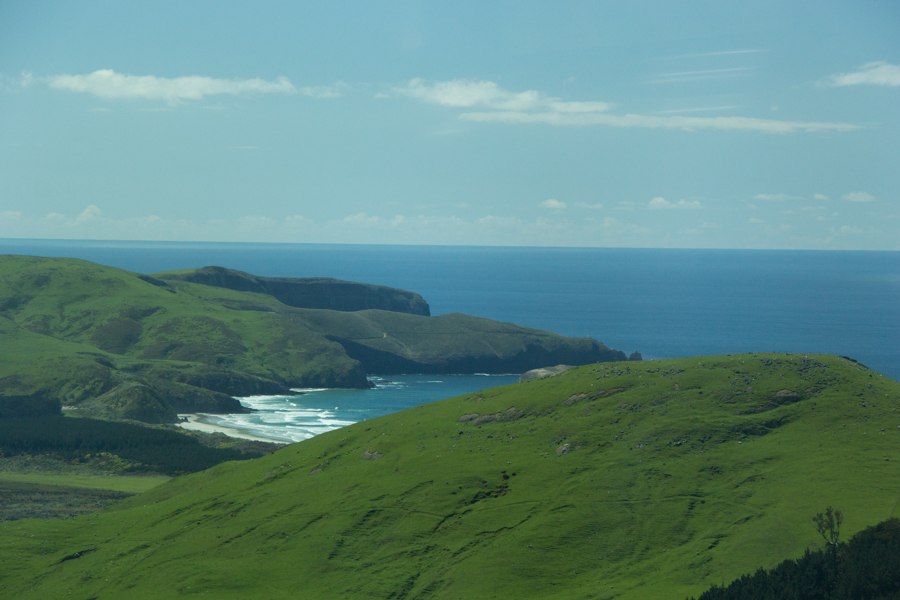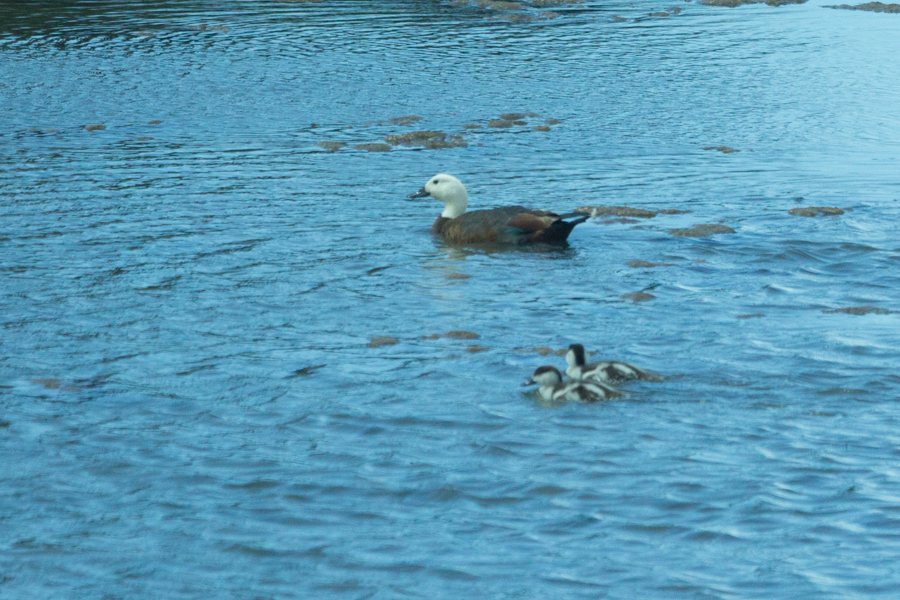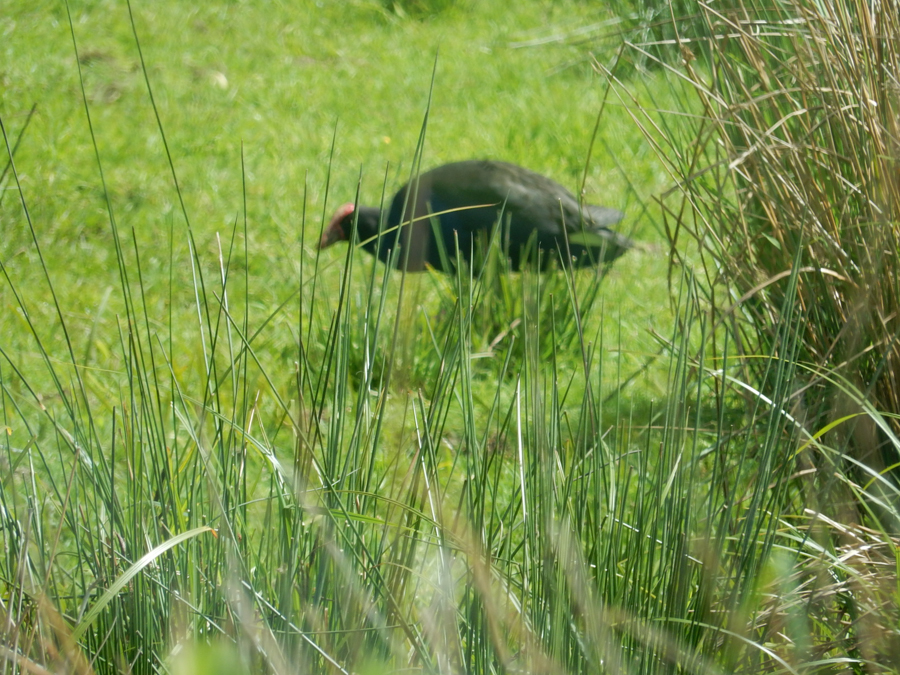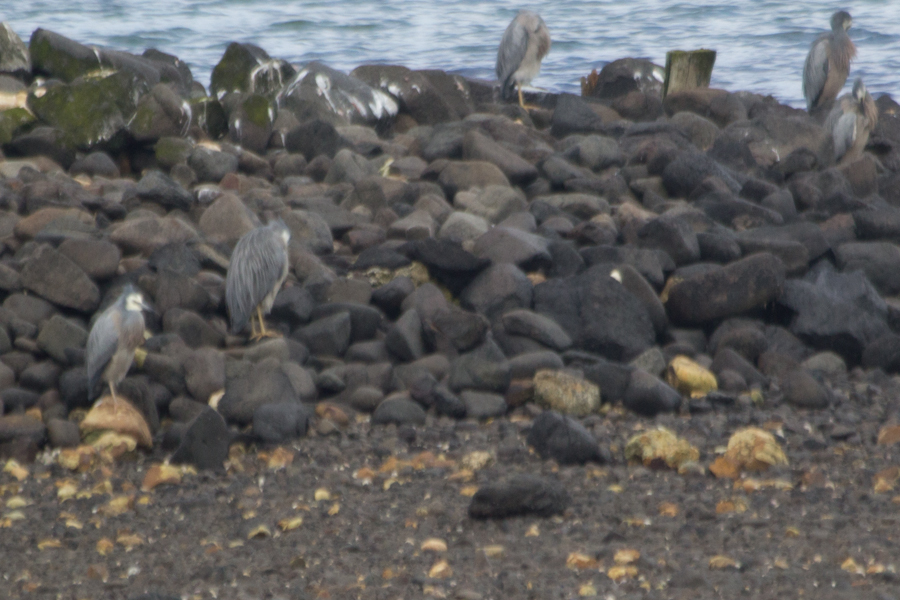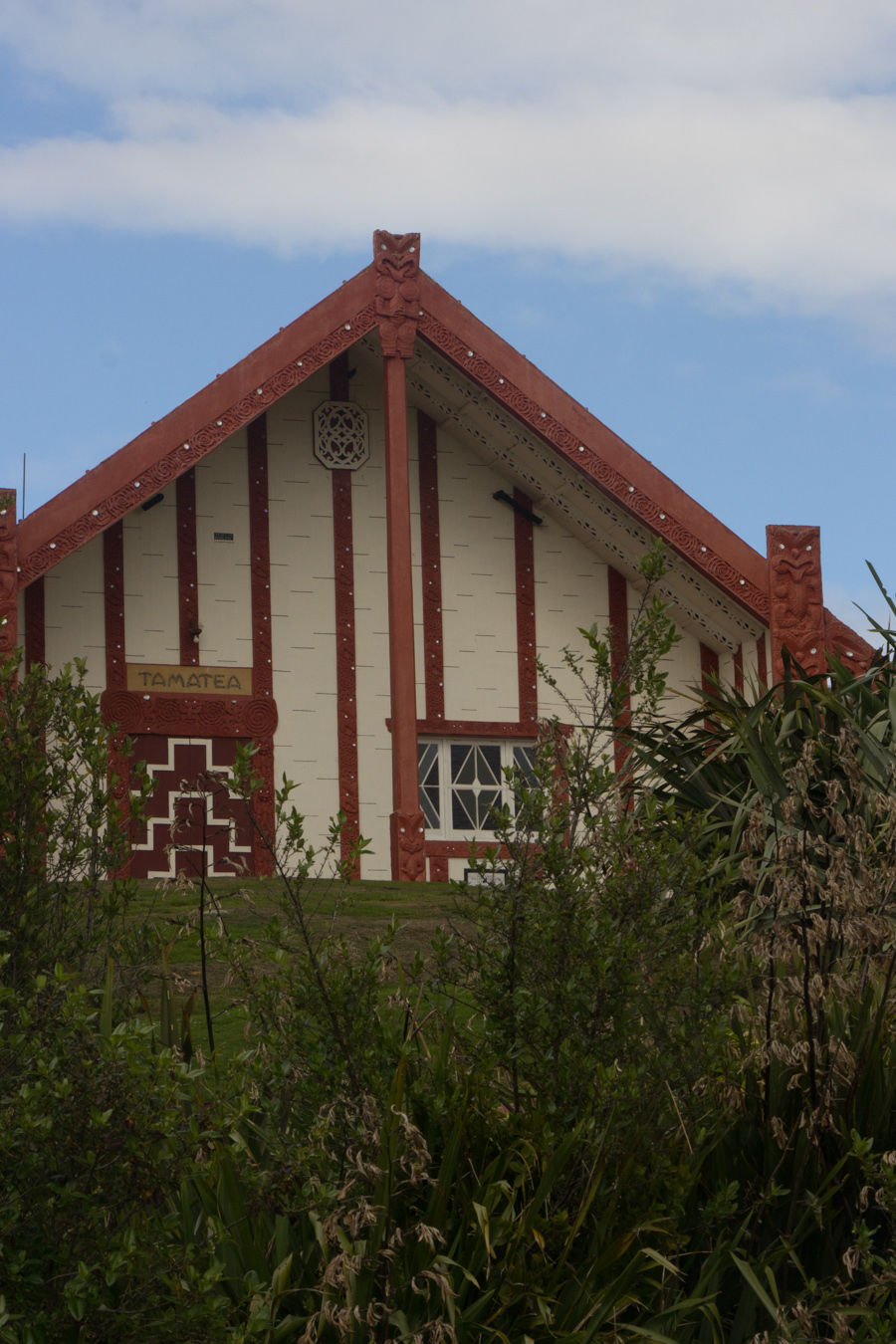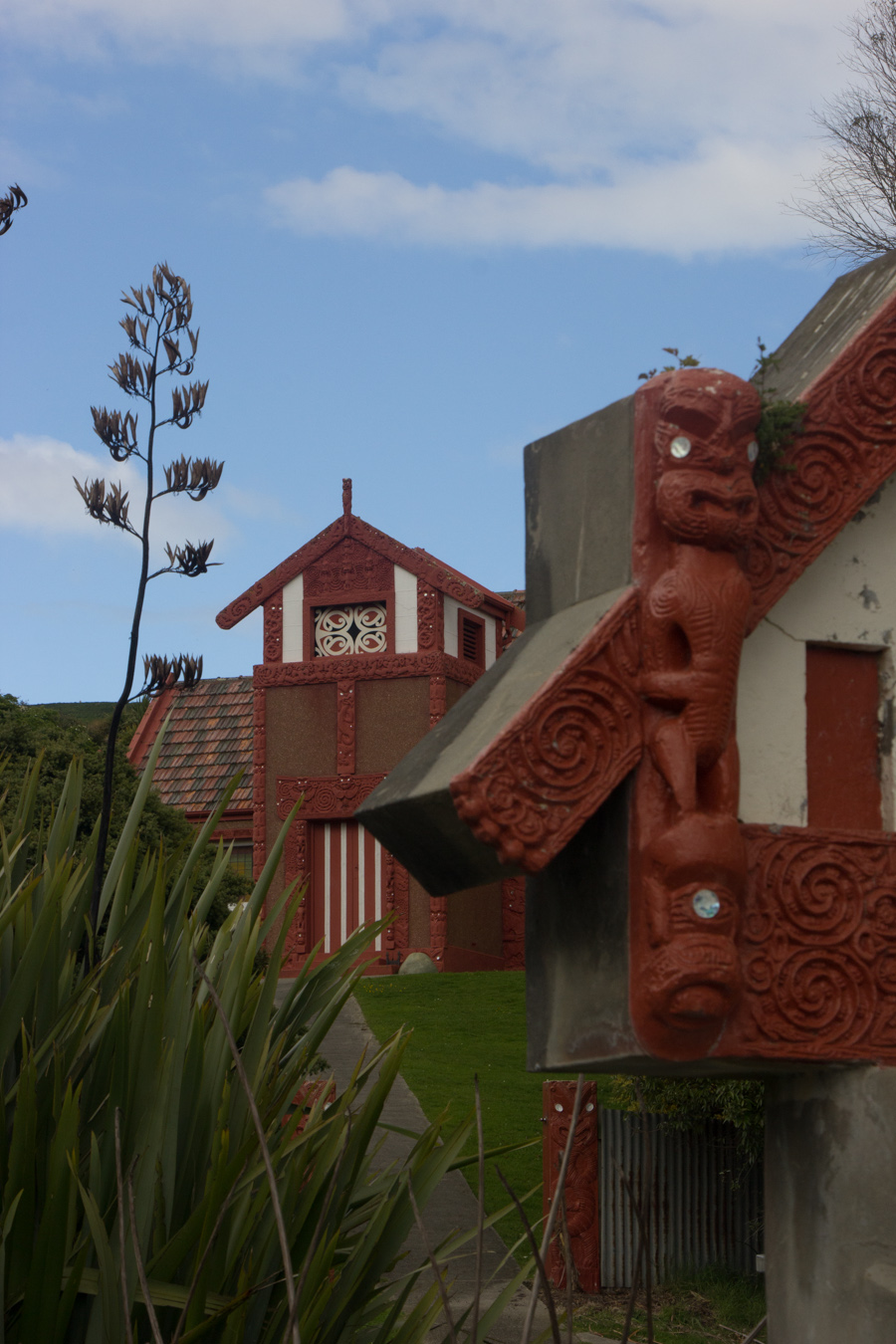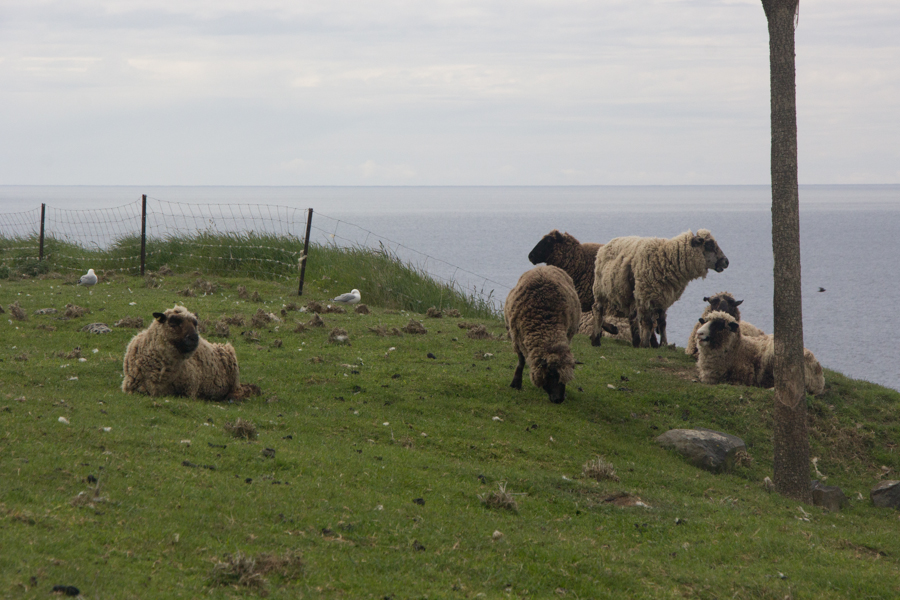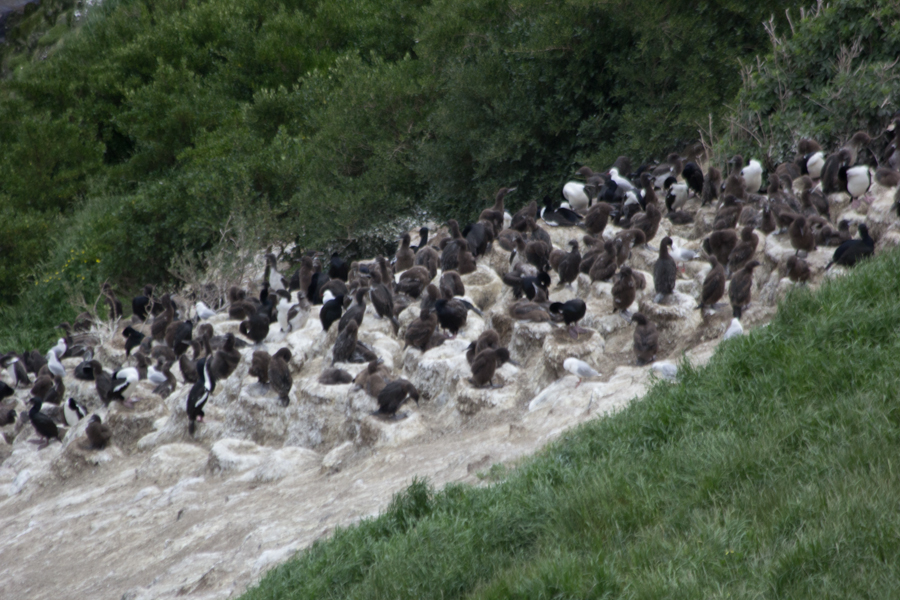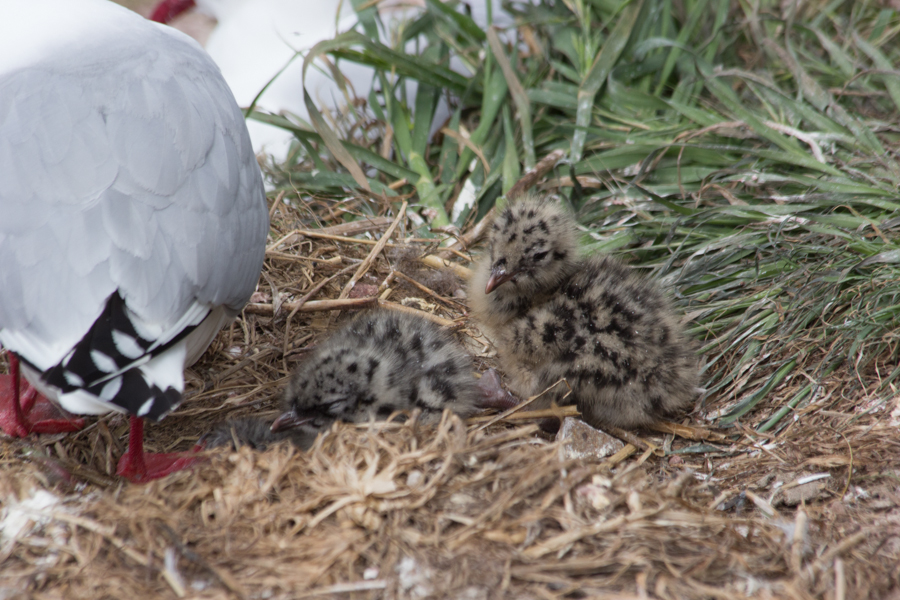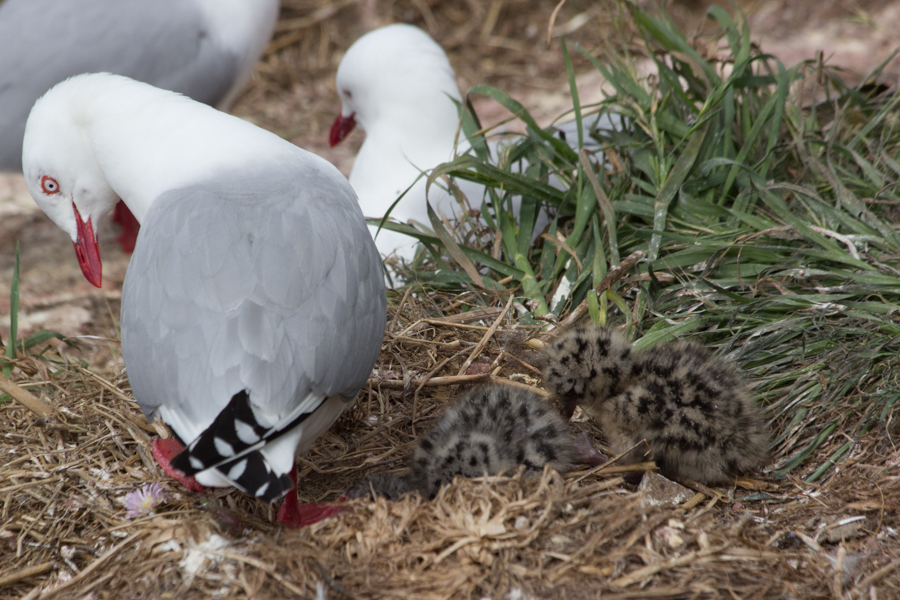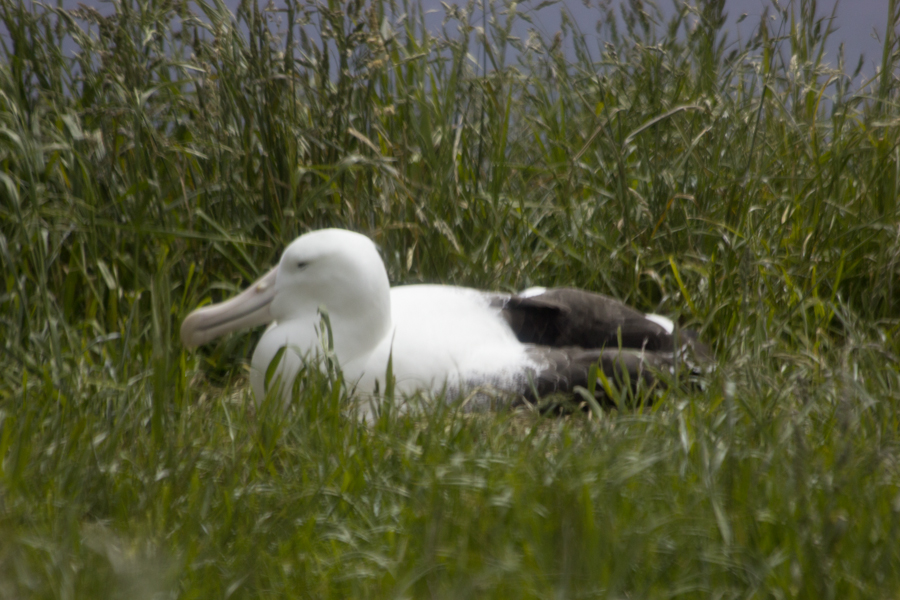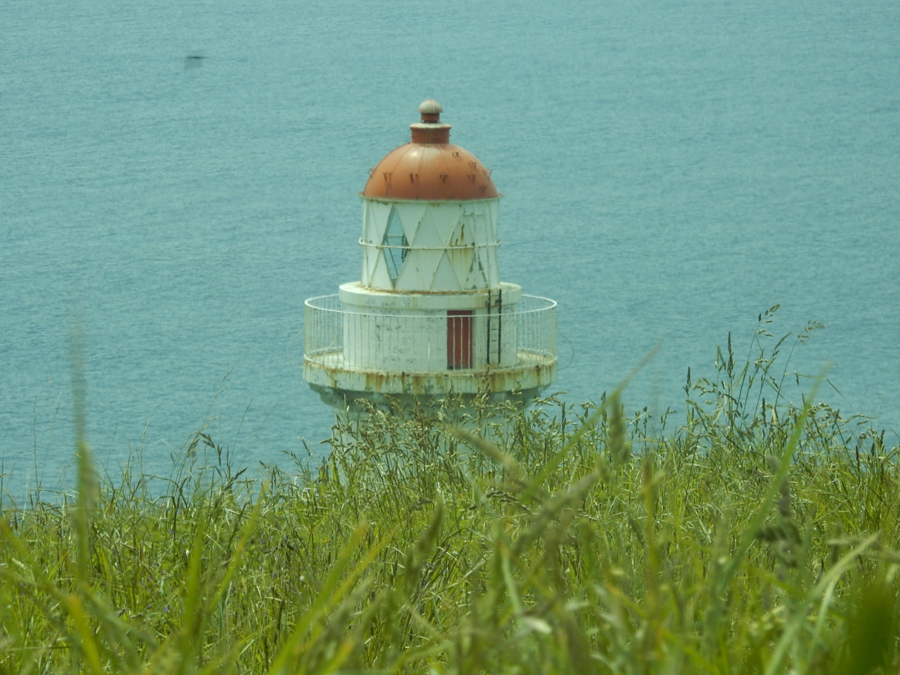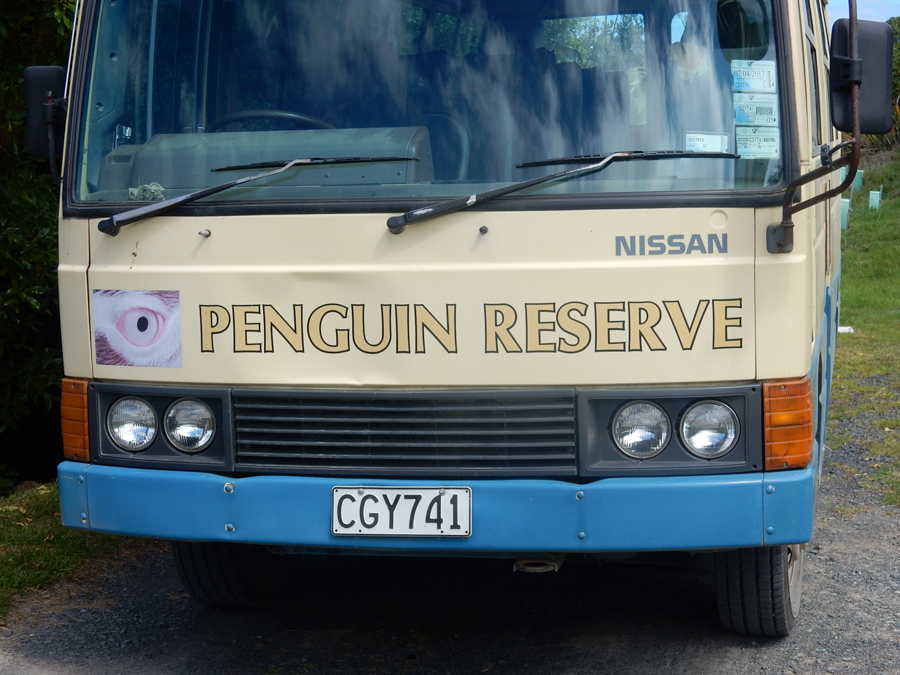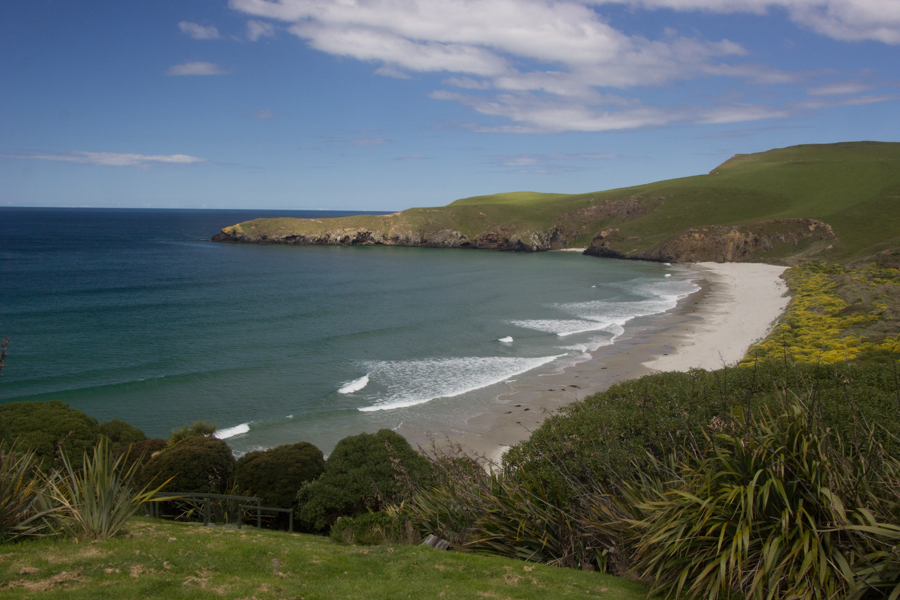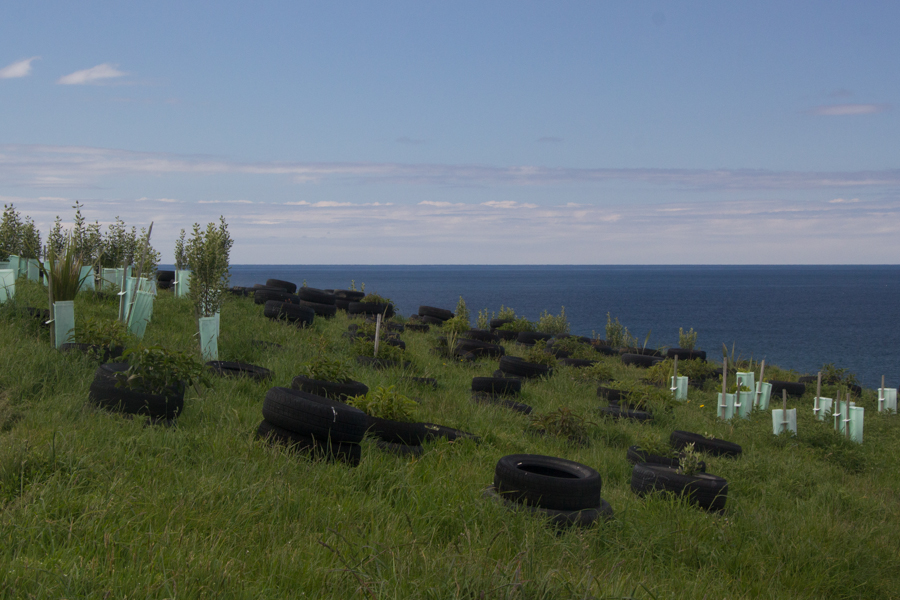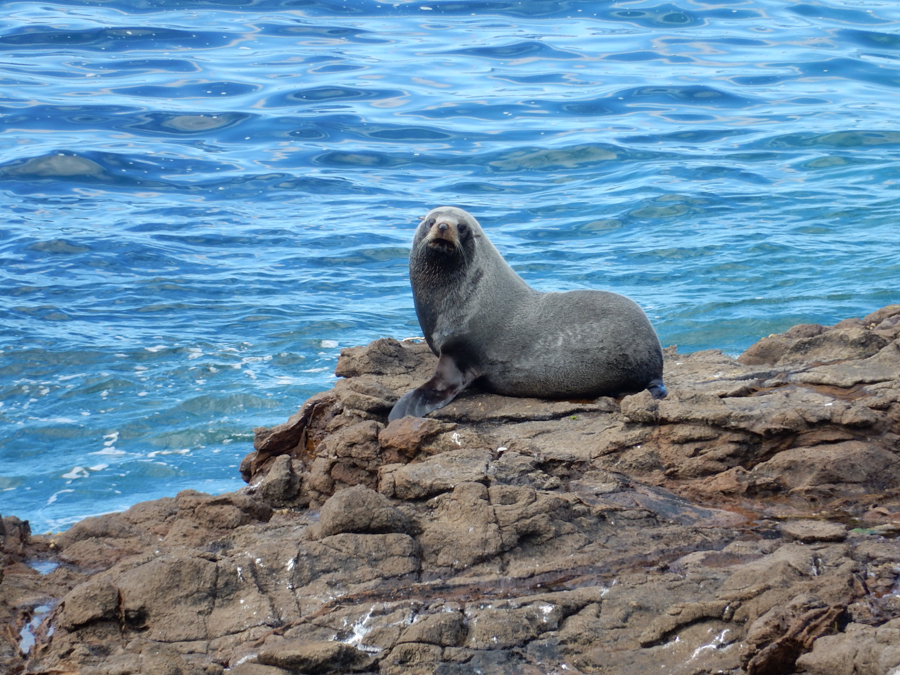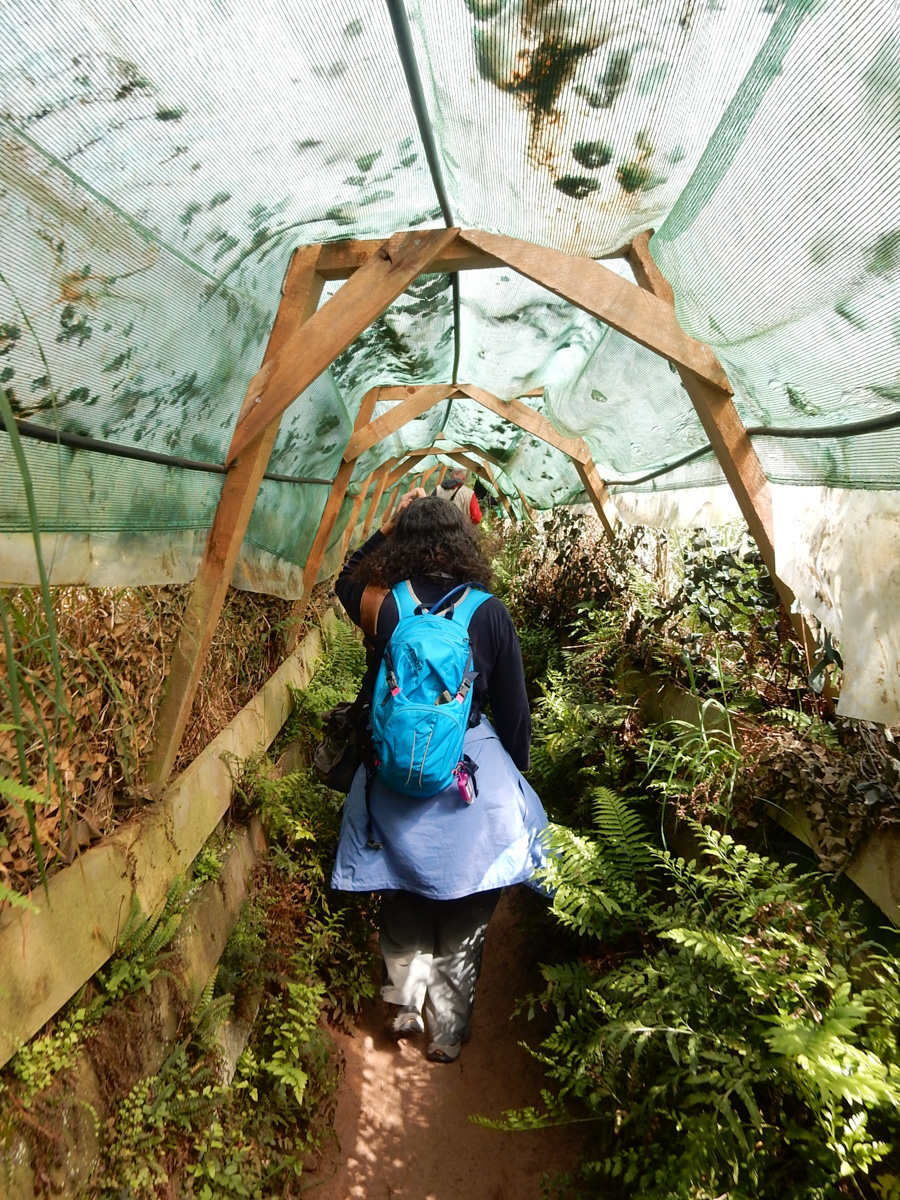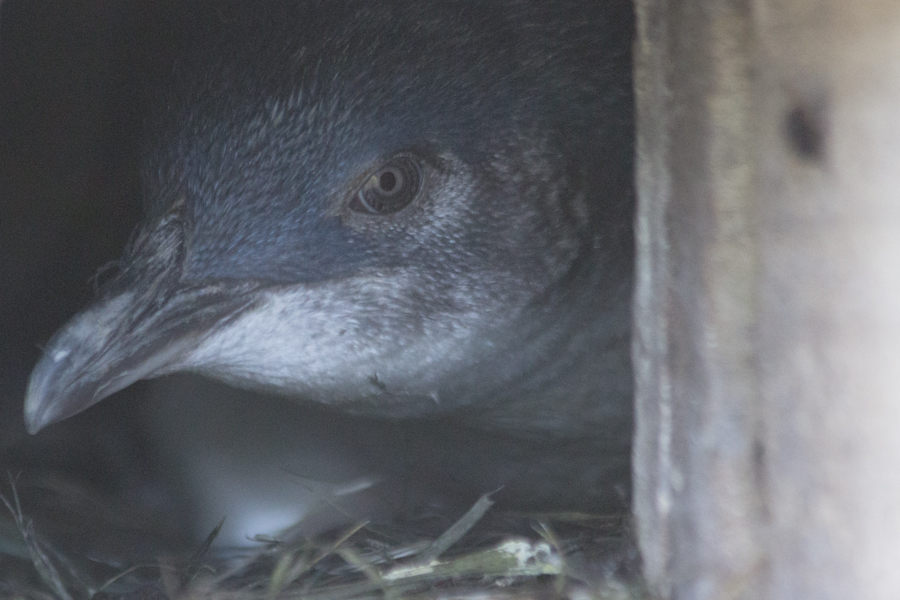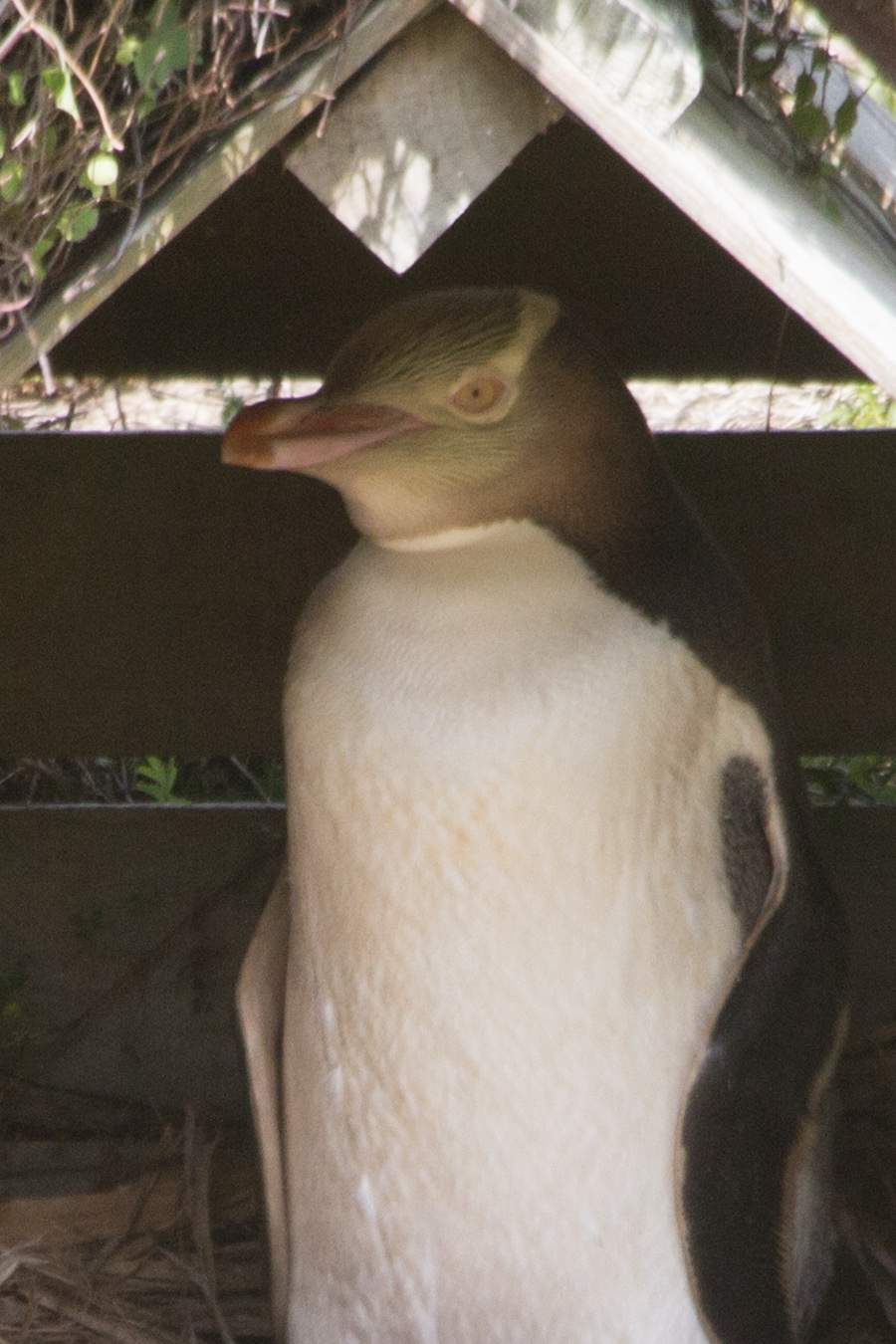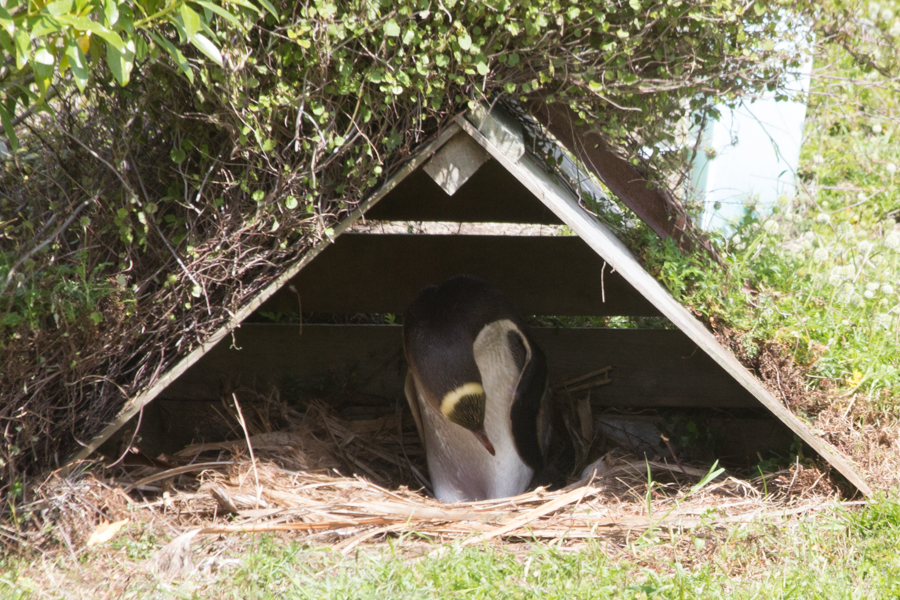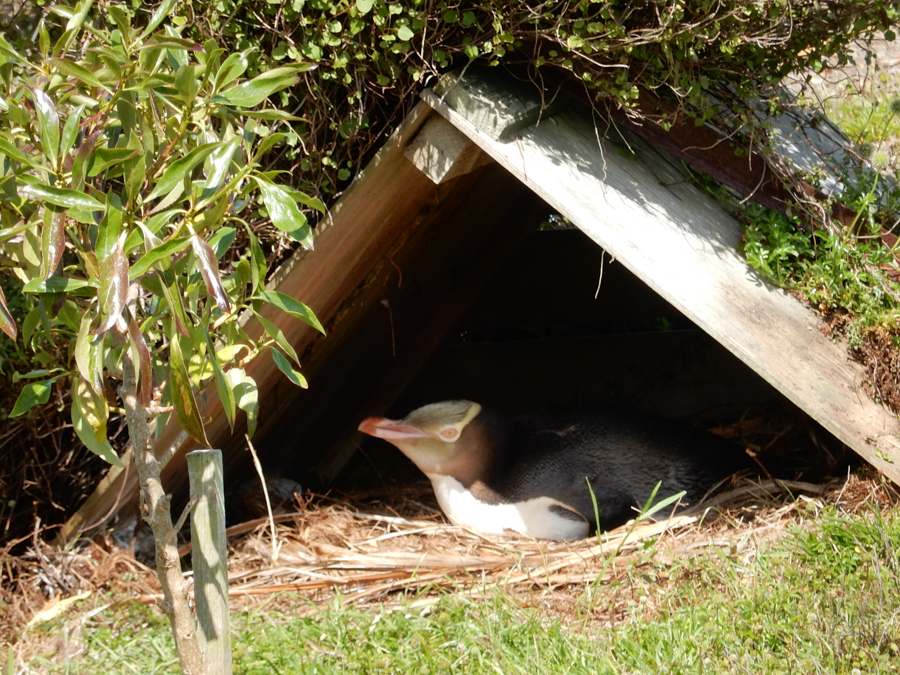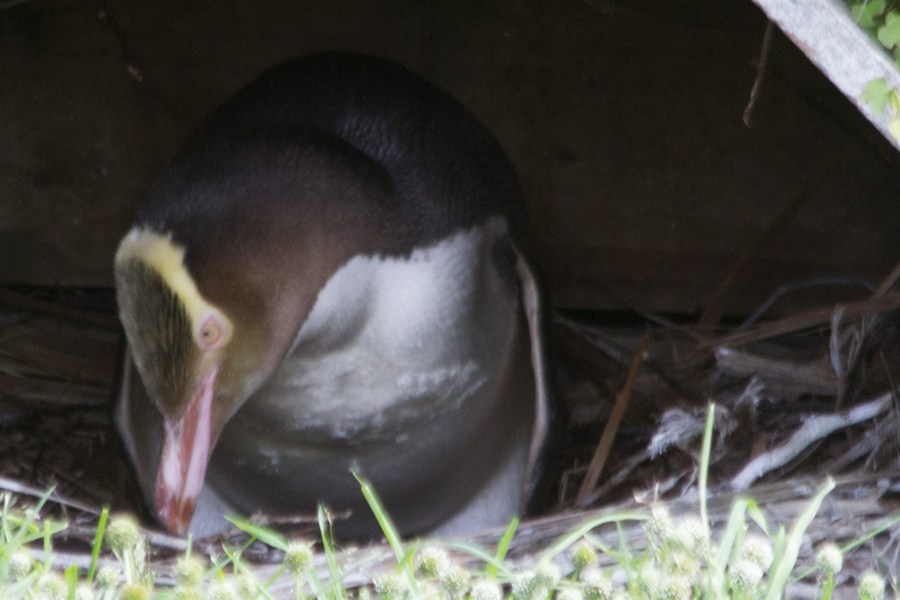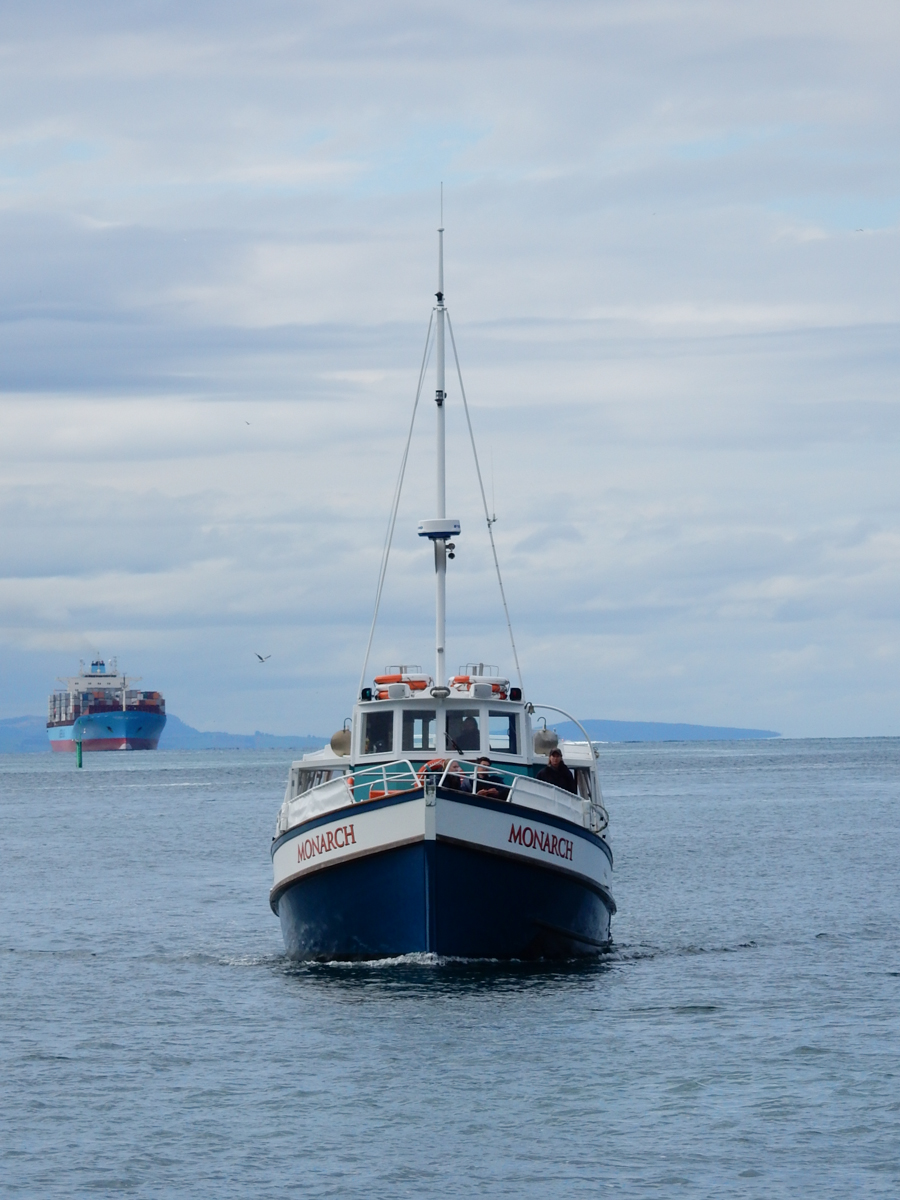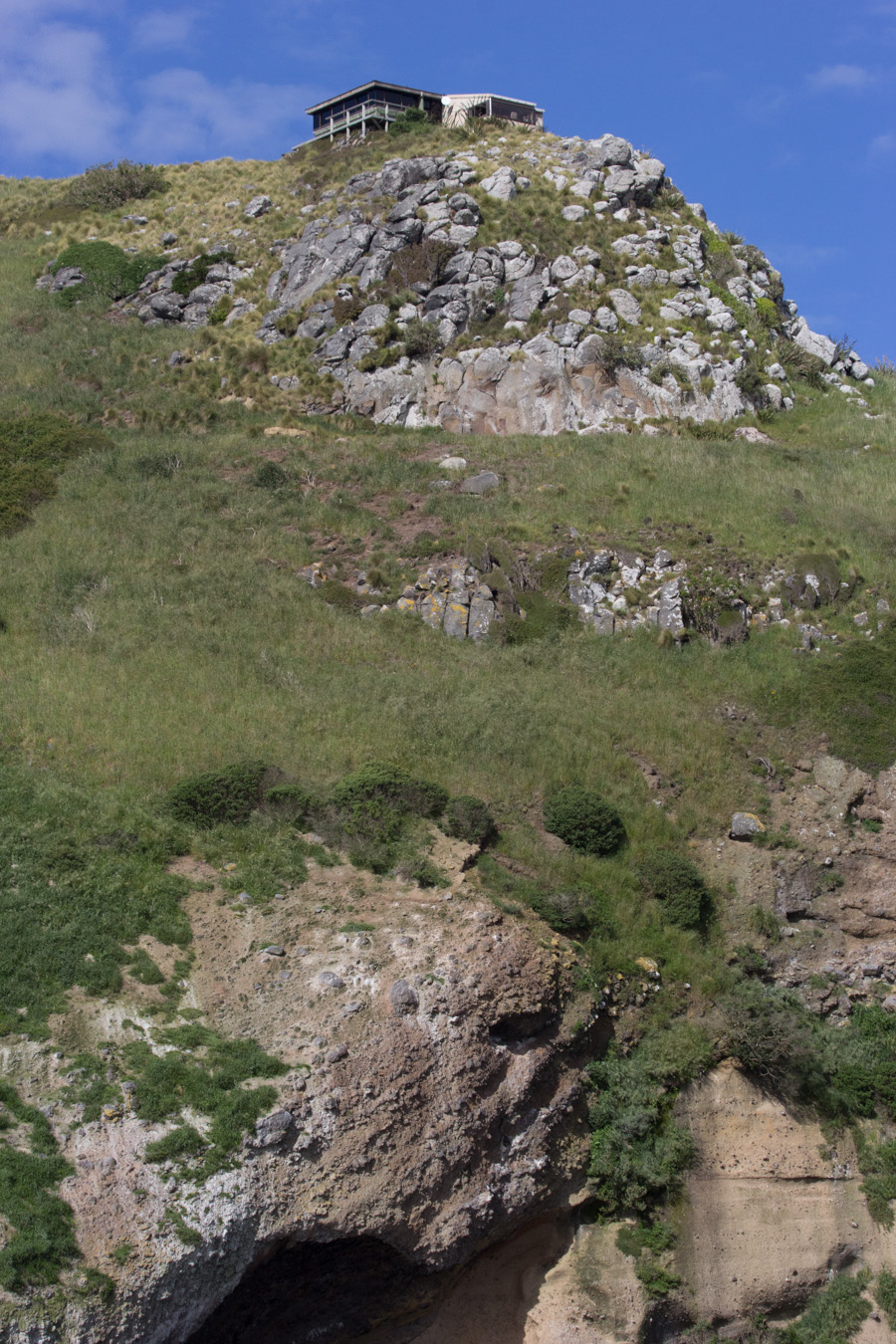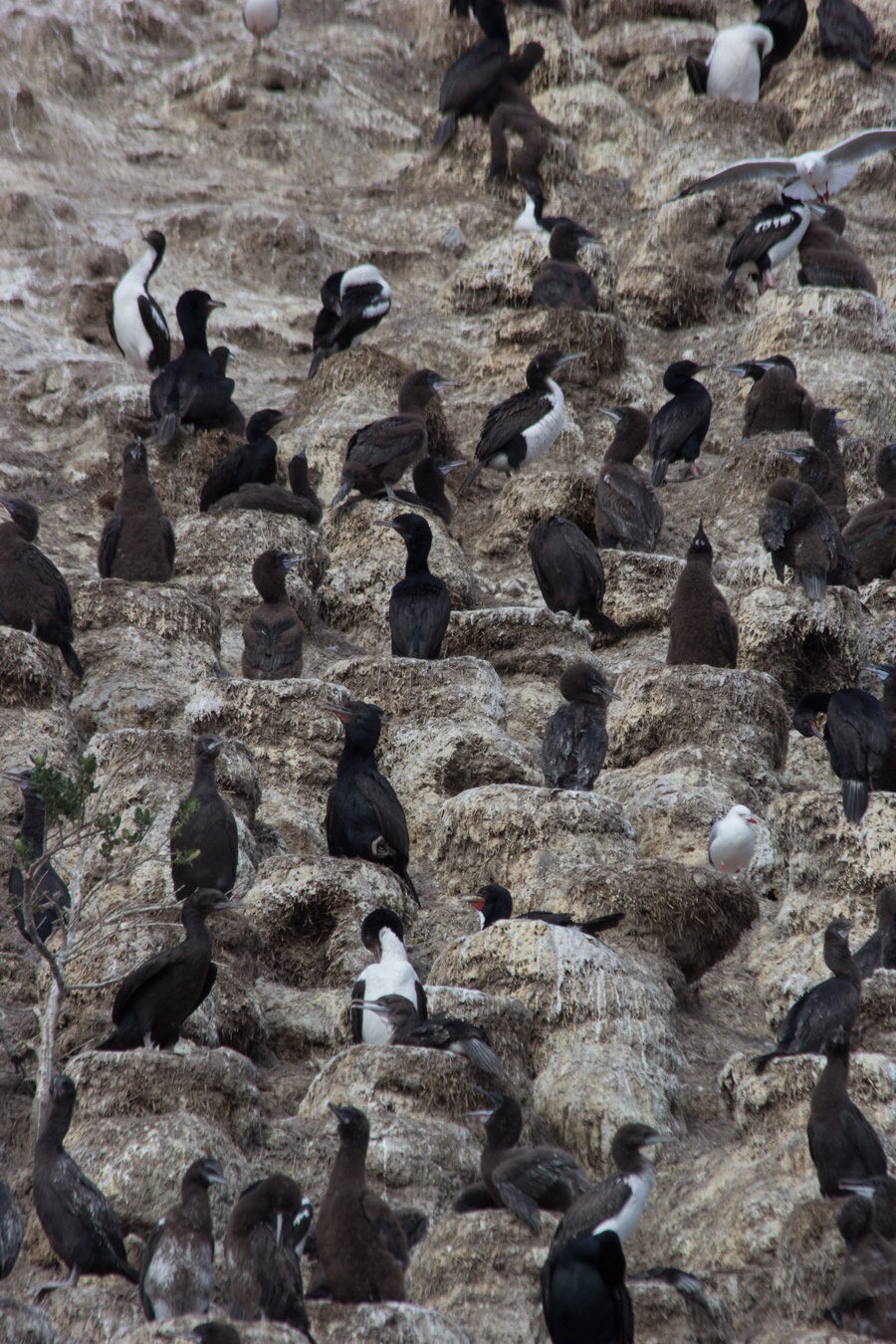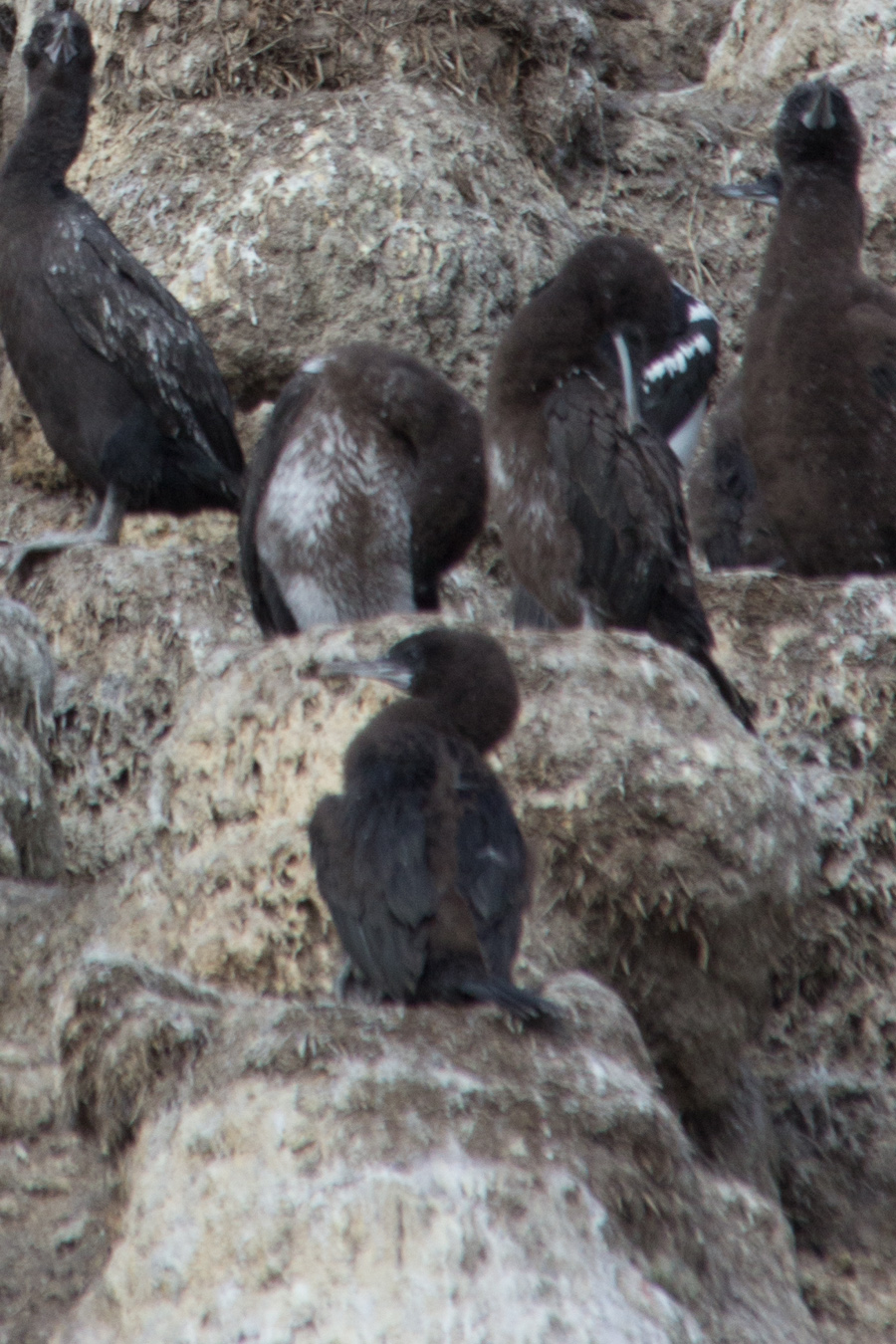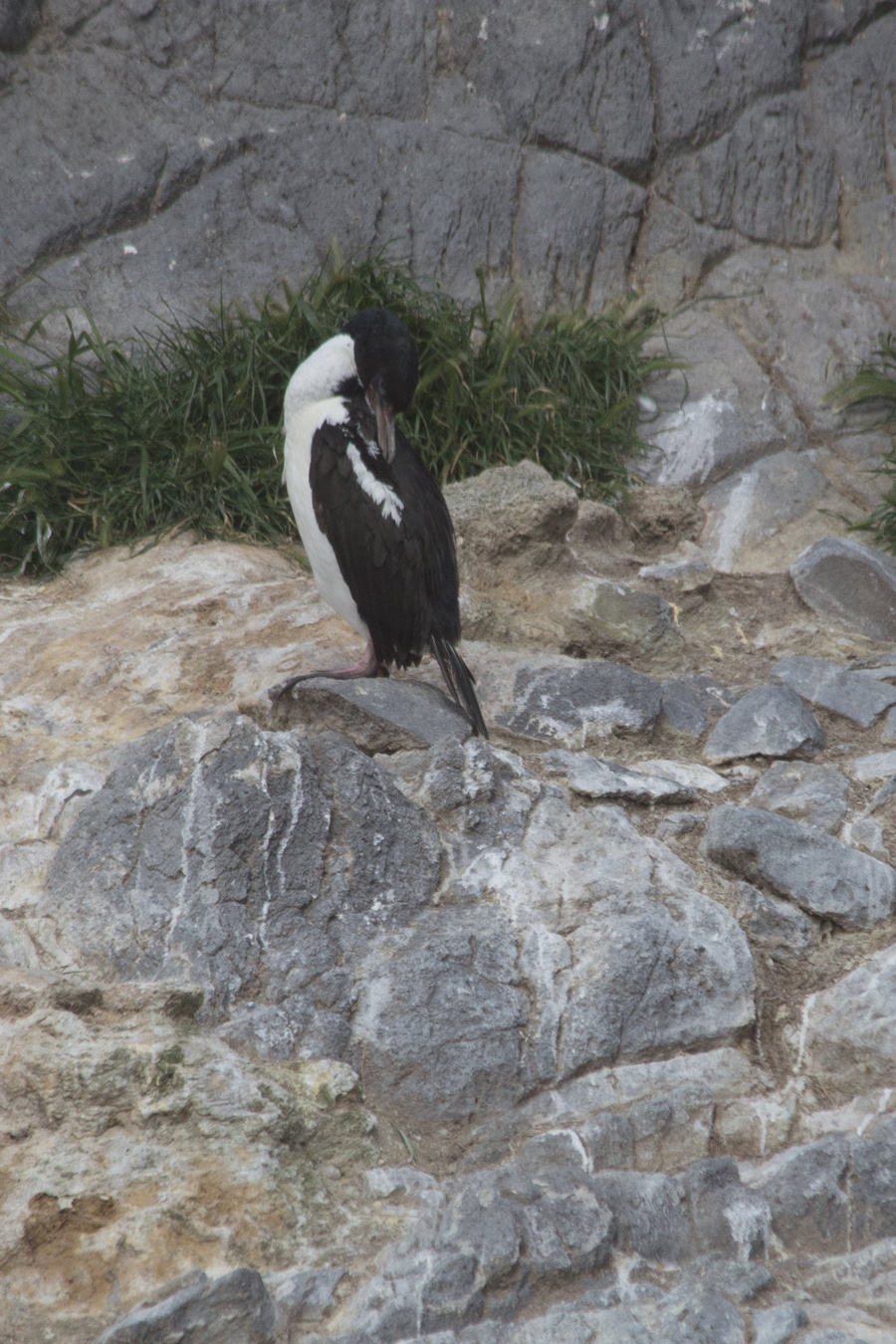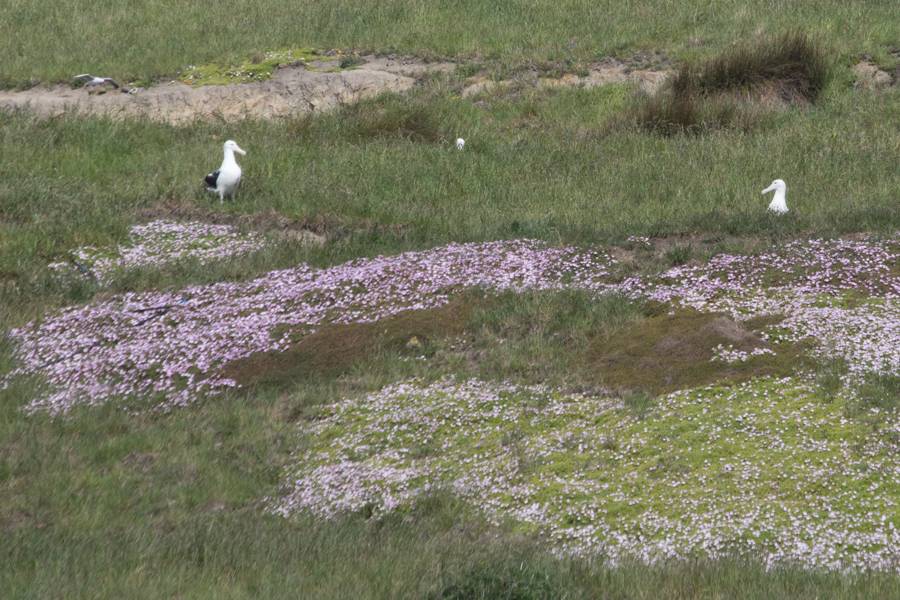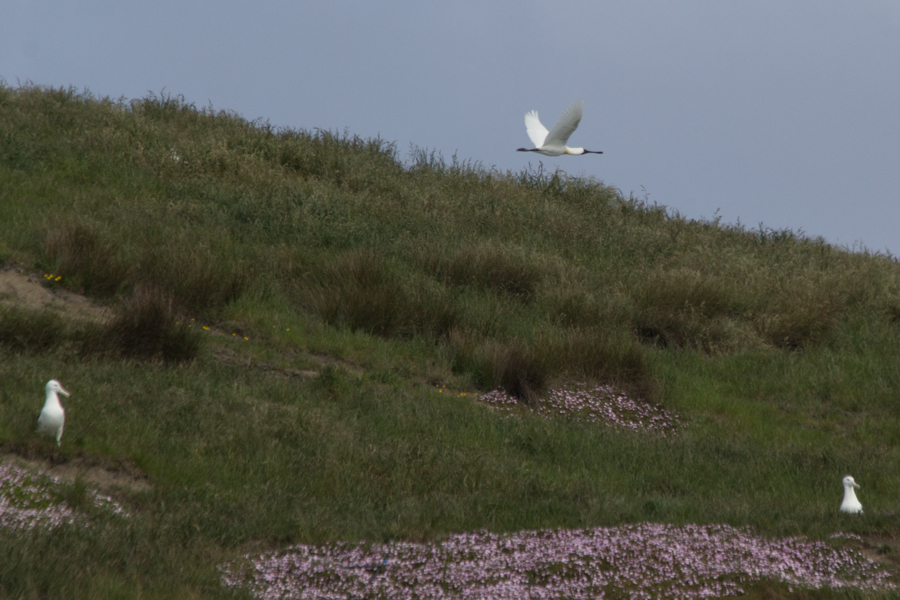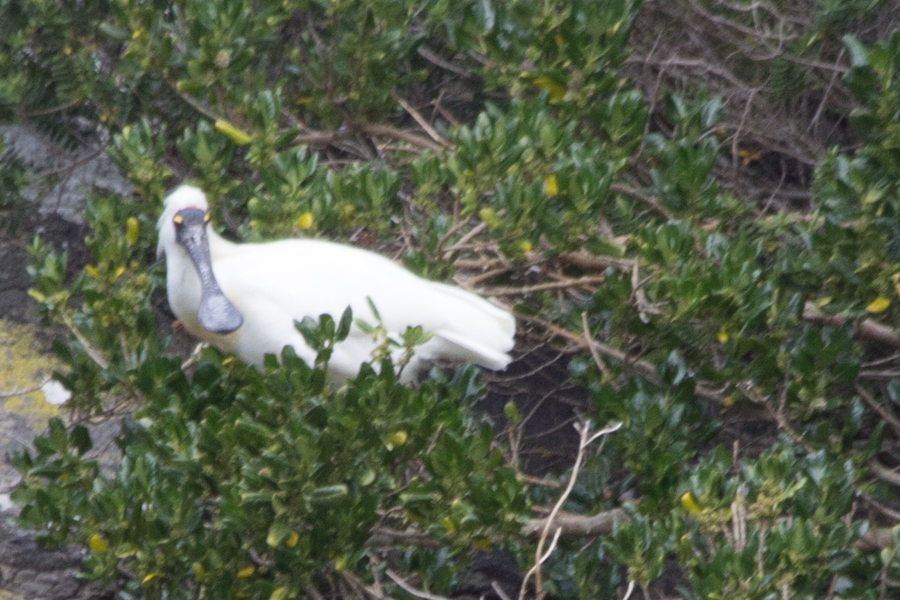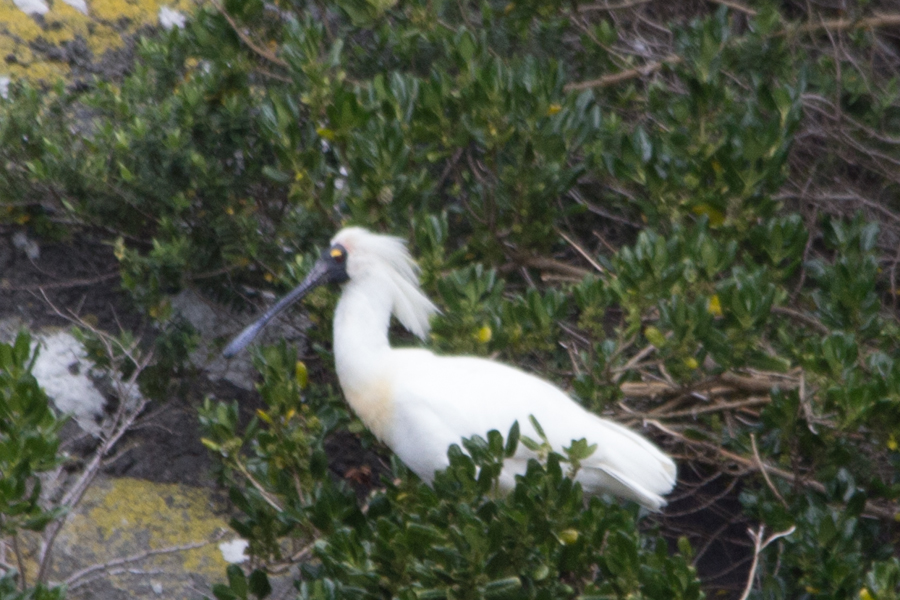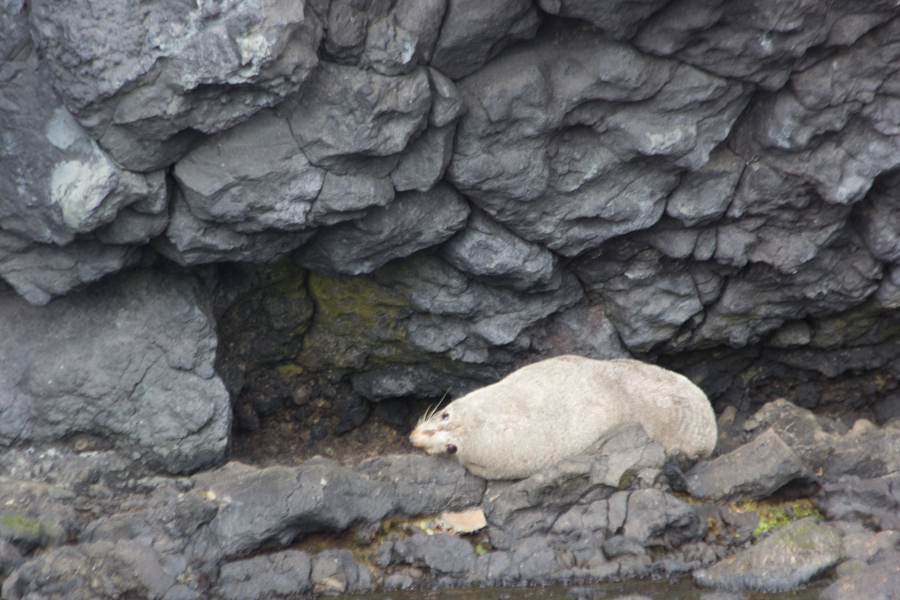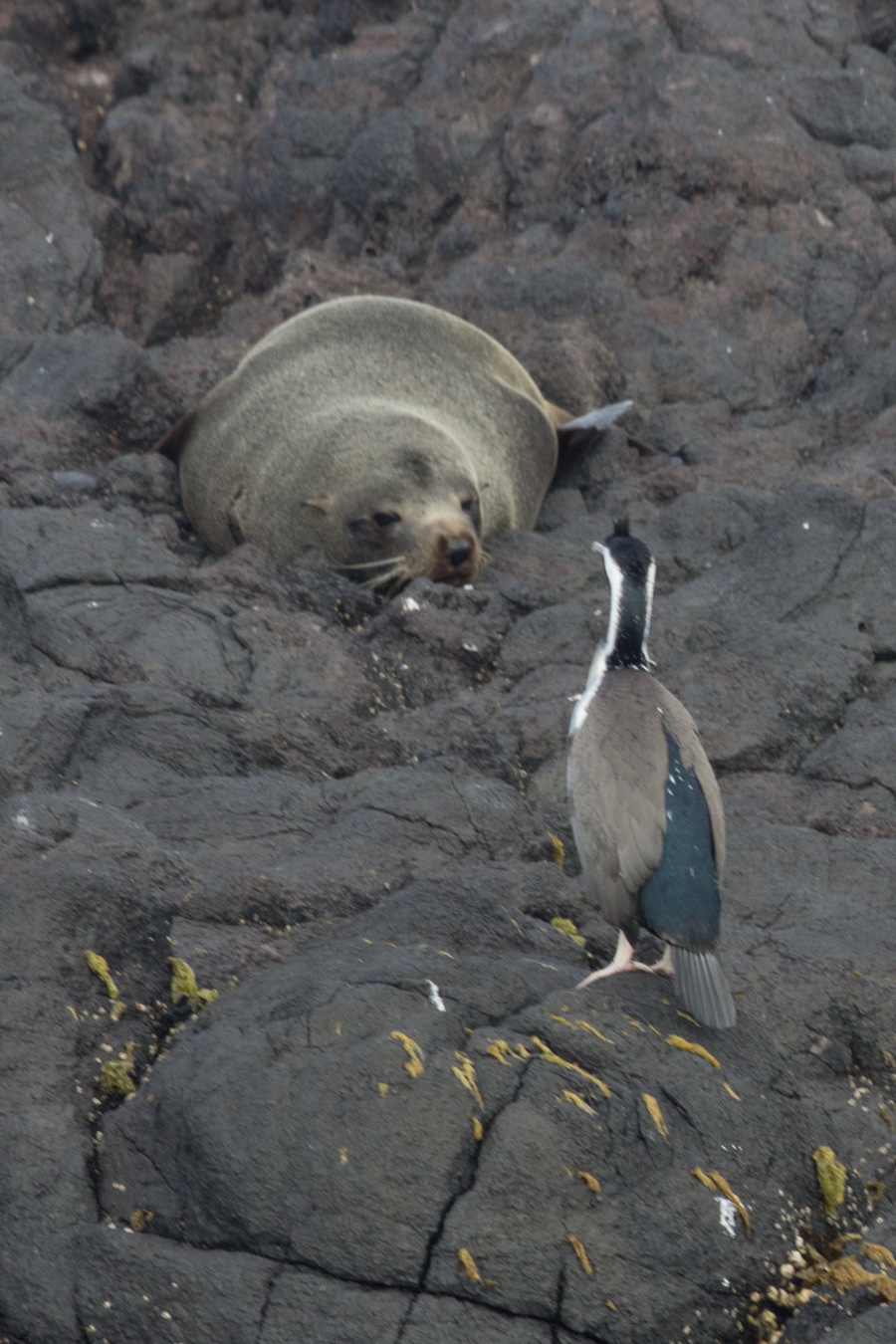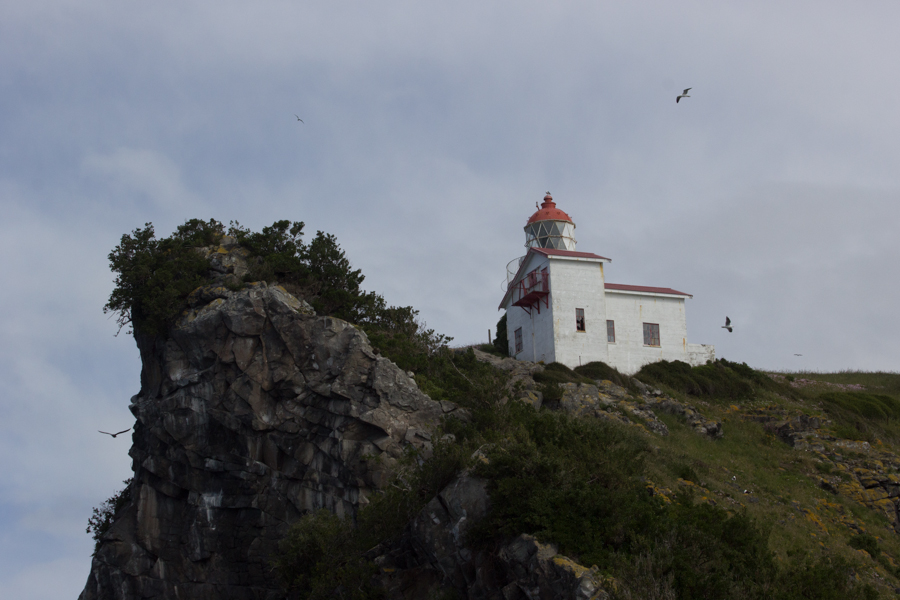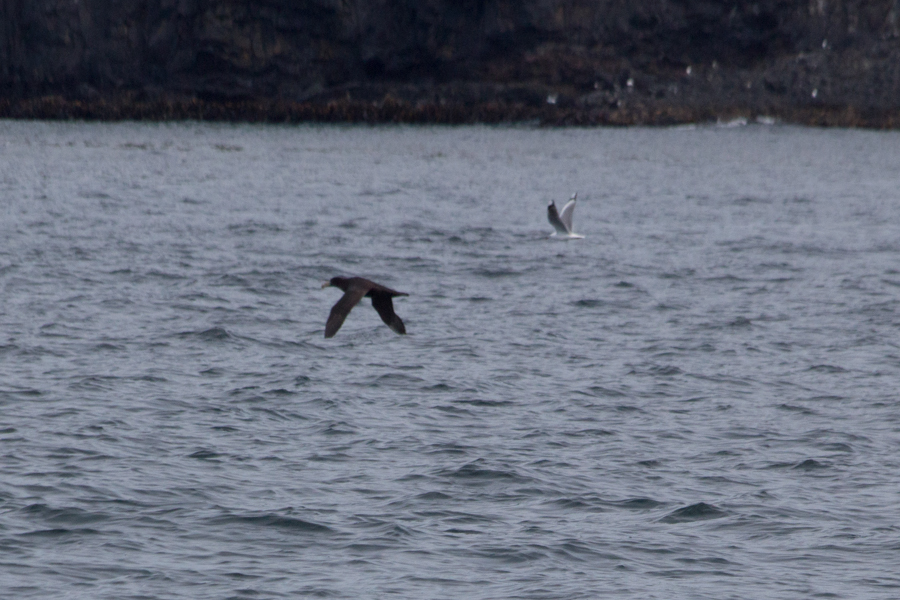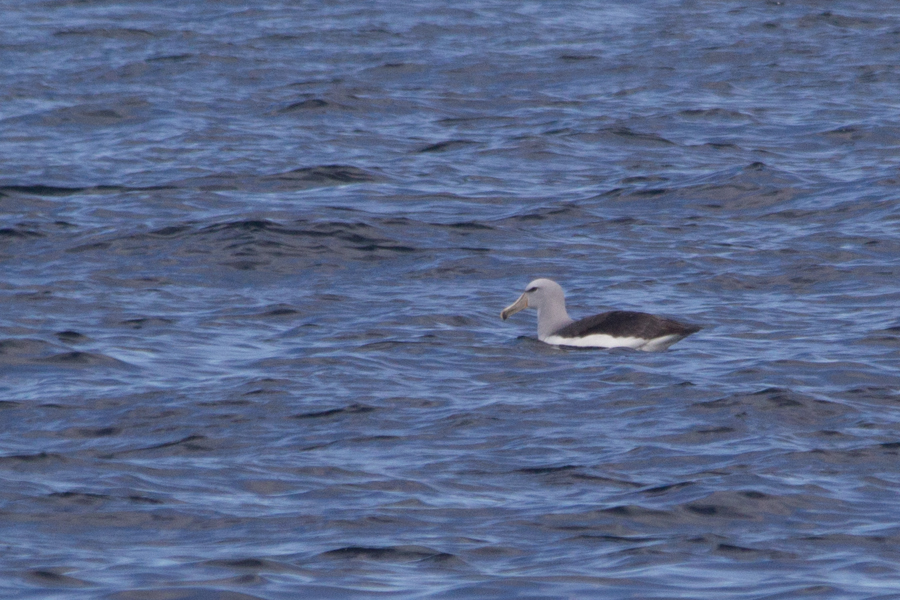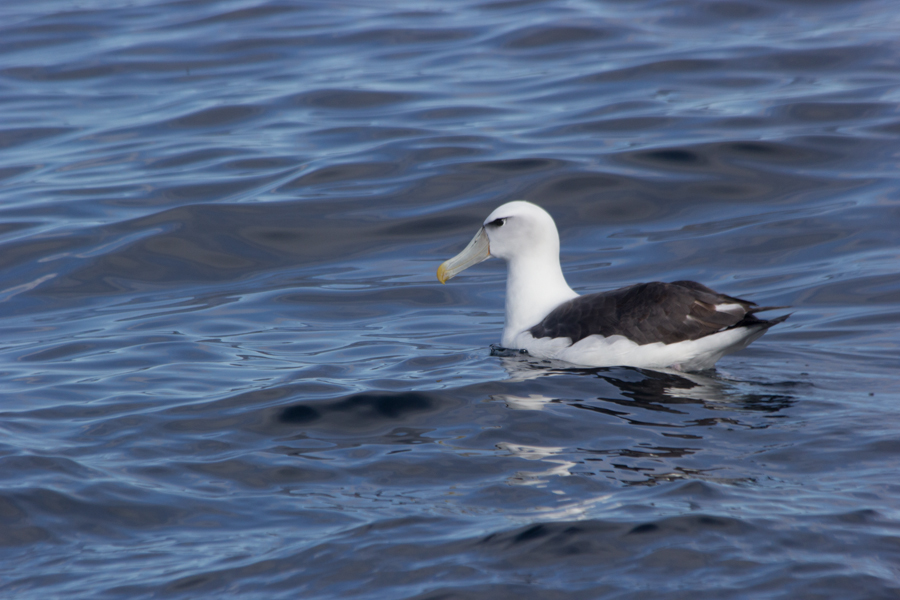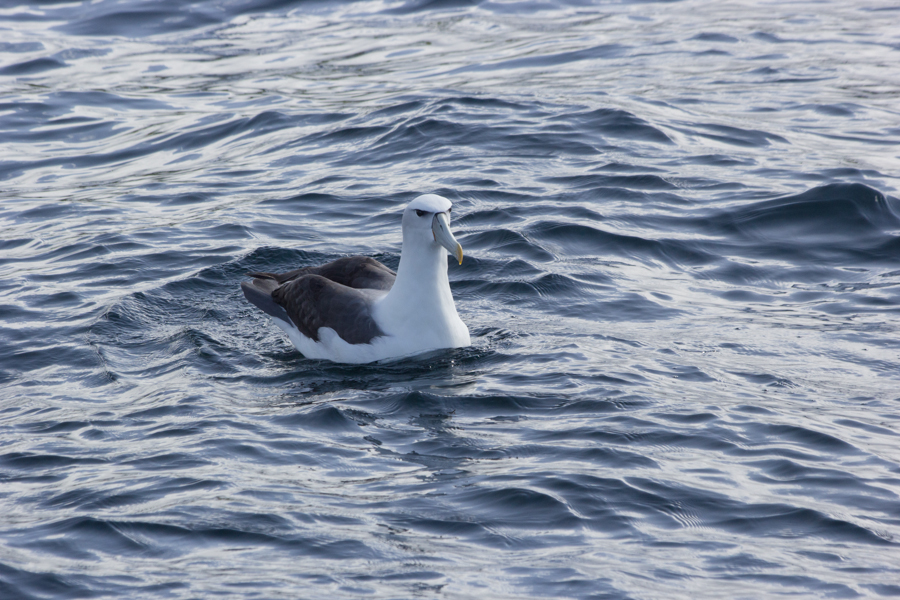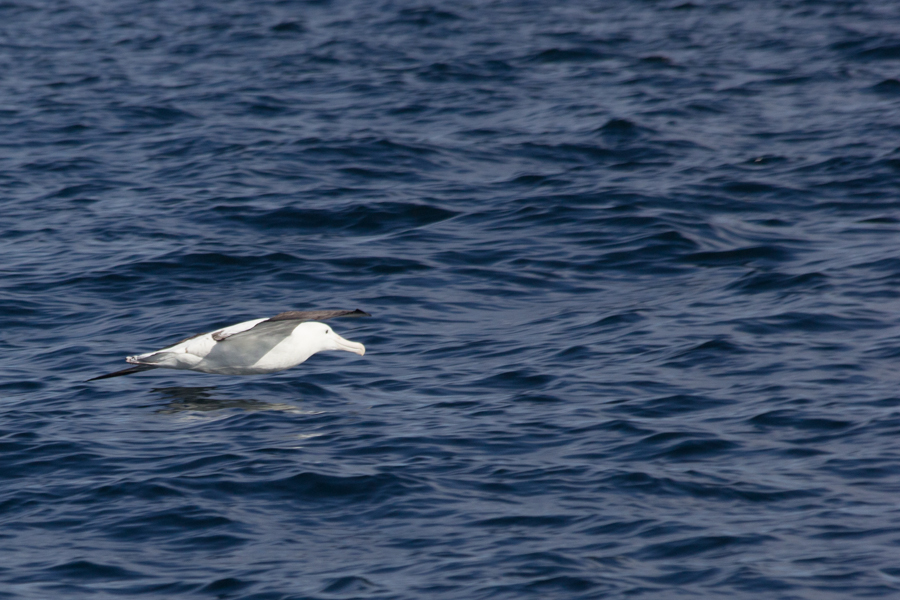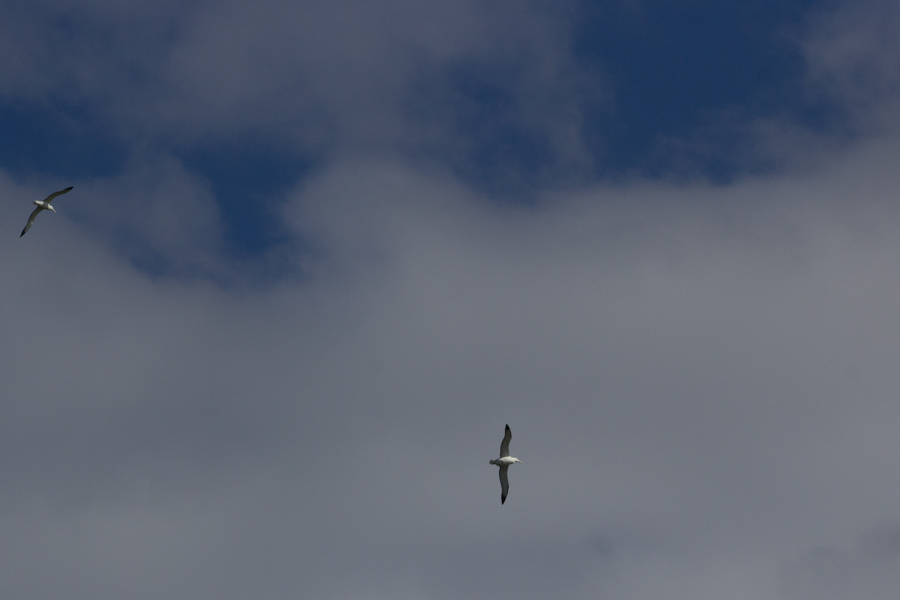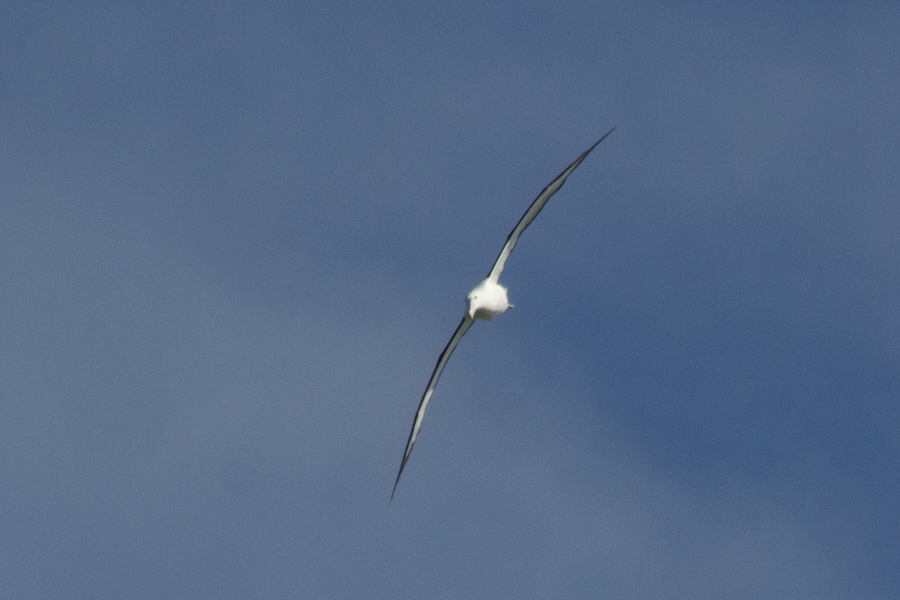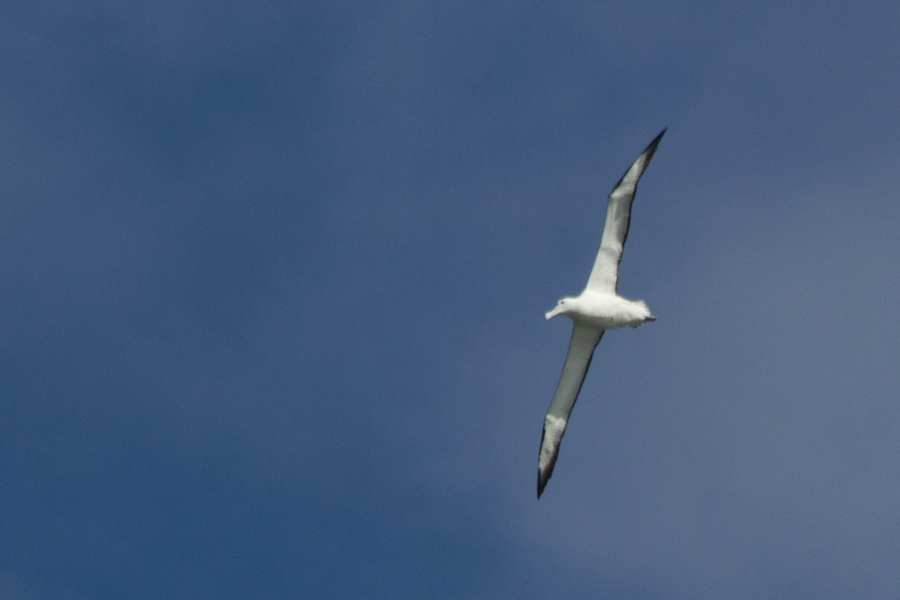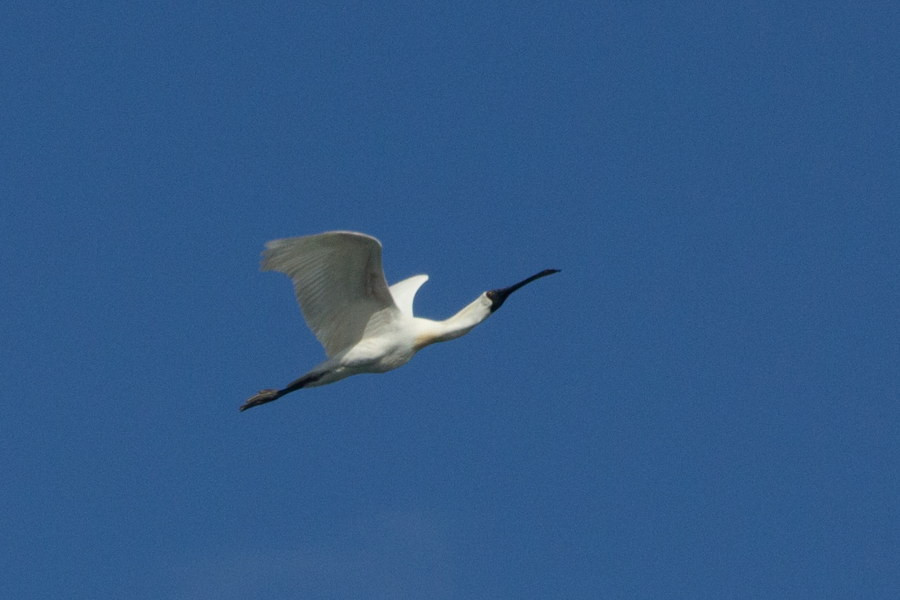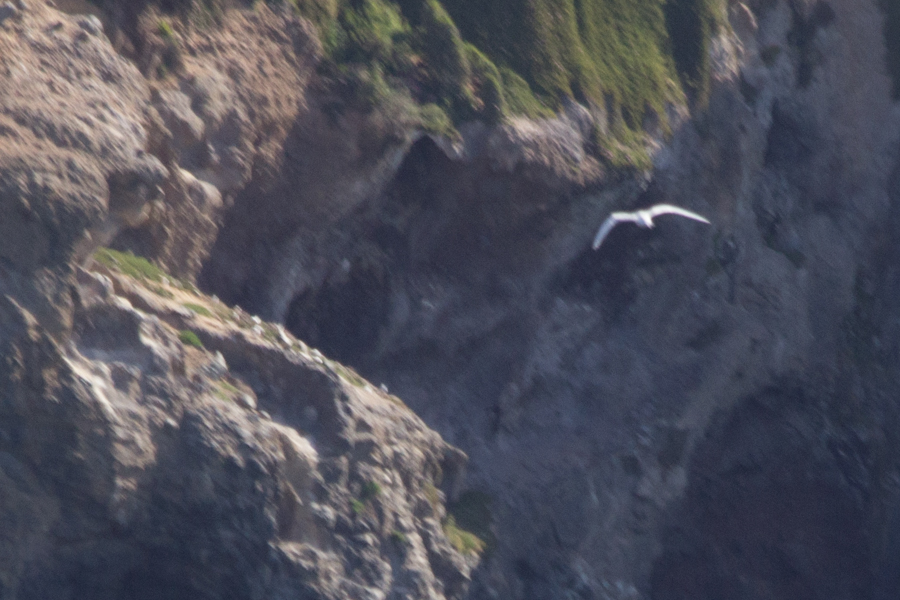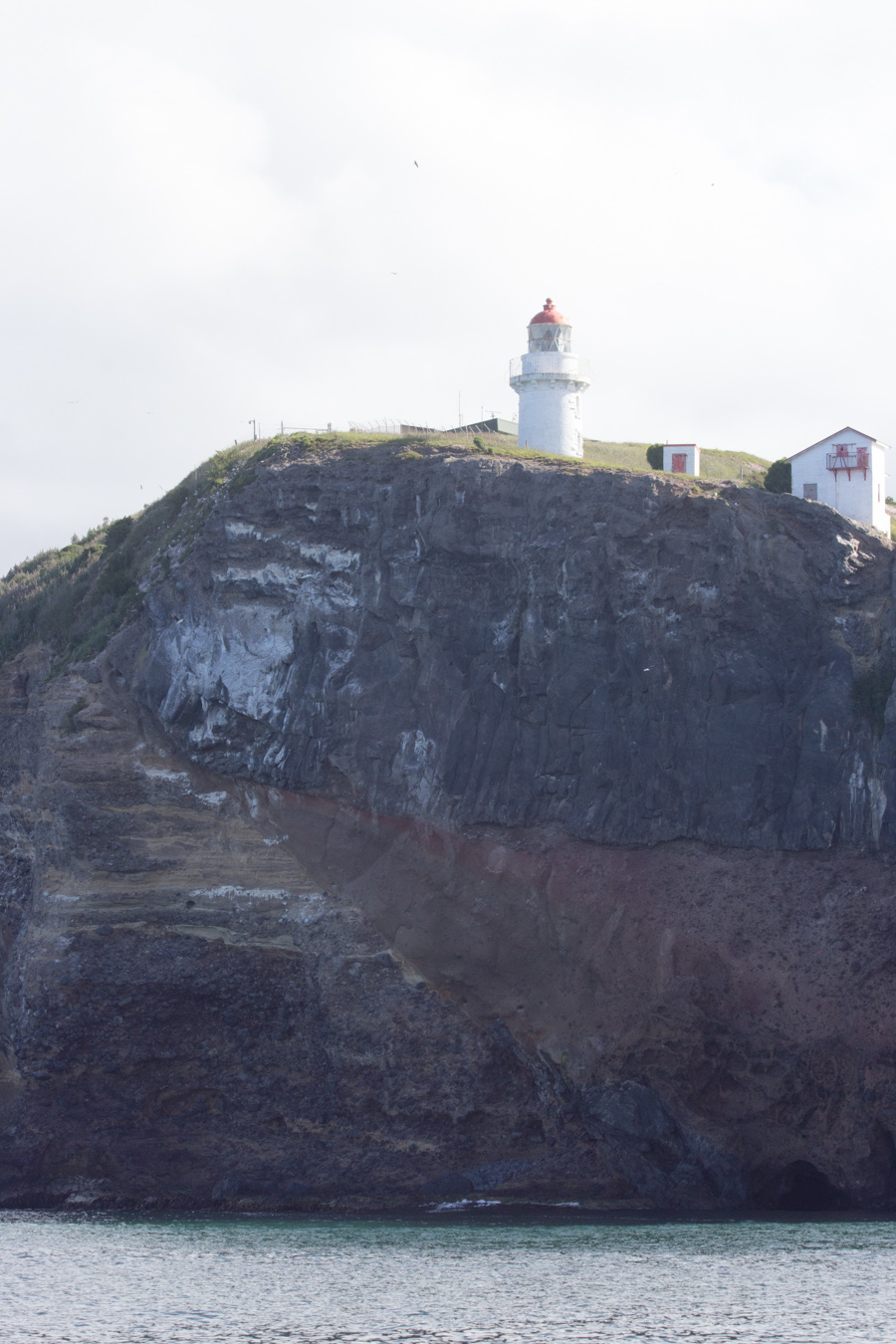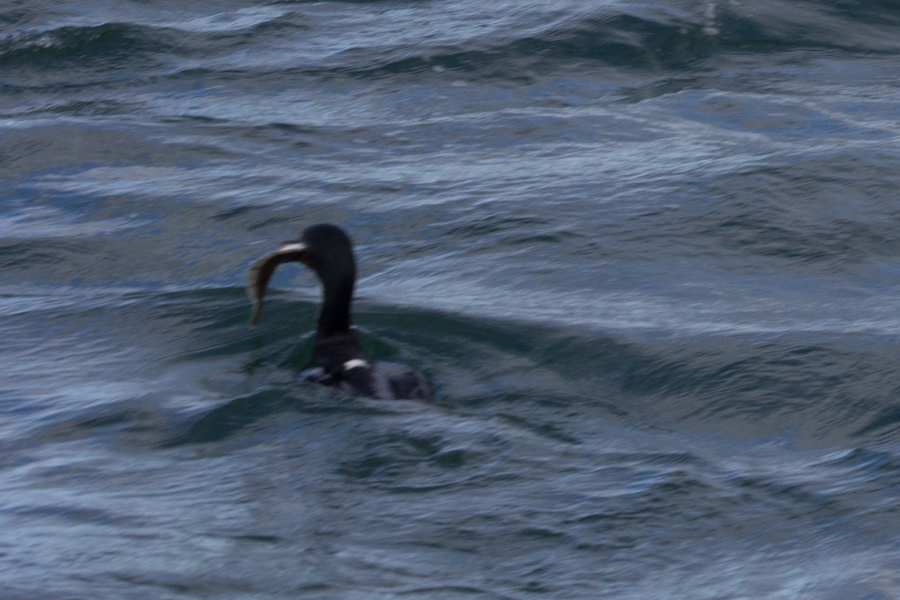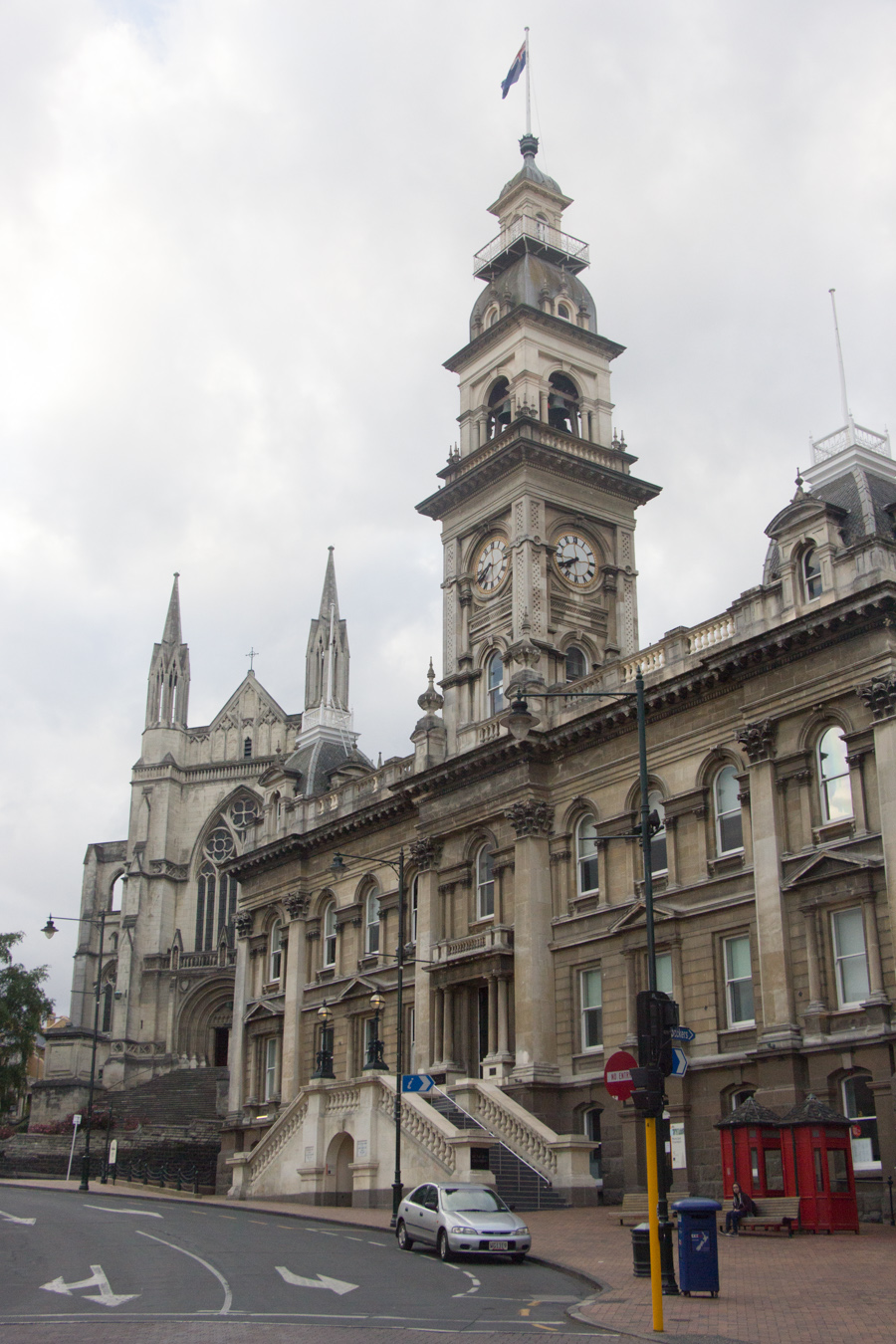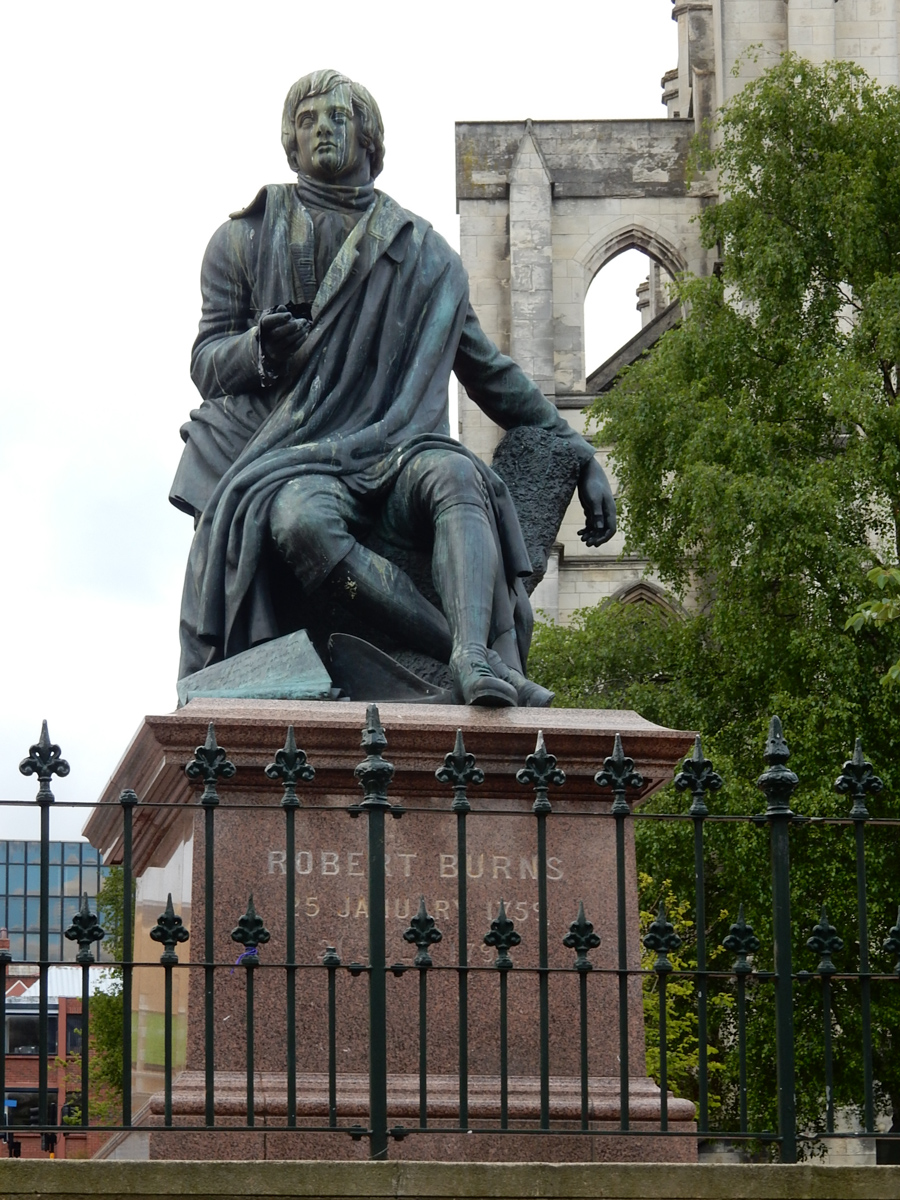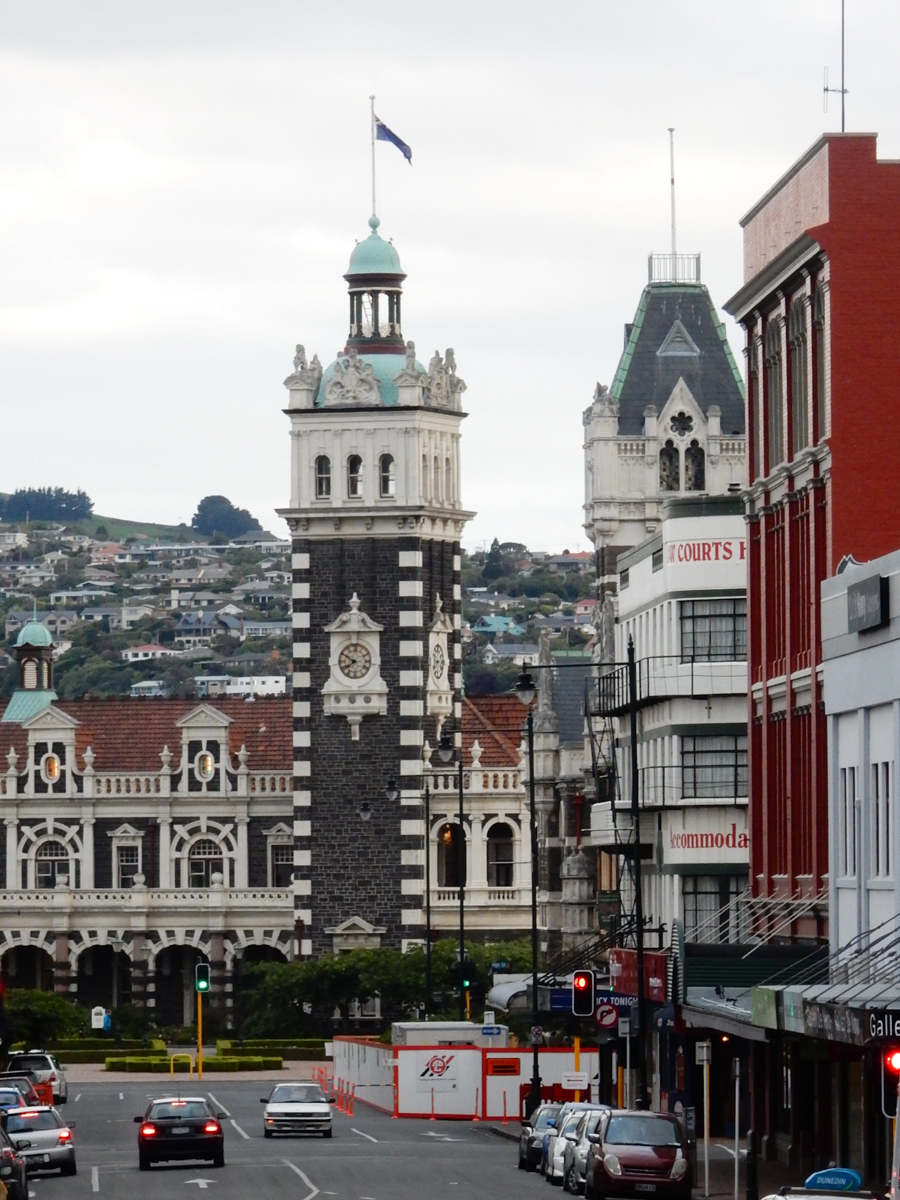Otago Peninsula
Sunday 13 November, 2016
Northern Royal Albatross in flight.
We spent two nights in the lovely Scottish-settled City of Dunedin, to have the opportunity to experience the nearly Otago Peninsula, known for some of the best wildlife viewing. In particular, this area offered the opportunity to see penguins! It was a positively spectacular day. For the best viewing, we hired a tour, which took us on three smaller tours, each wonderful: the Royal Albatross Center, Penguin Place, and Monarch Wildlife Cruises & Tours.
Sights of Otago Peninsul
David, our first driver, picked us up and drove us along Otago Harbour.
Looking out at the Pacific Ocean from the hills on the Otago Peninsula.
We stopped to see the now-familiar endemic Paradise Shelduck, again with chicks.
David showed us the native Pukeko. Eric got a better picture of it hiding in the grass.
I didn't get a great picture of these native White-faced Herons, but here they are.
David showed us this marae, or Maori meeting house.
And this Wesleyan (Methodist) Church.
As he drove us out onto the peninsula, David talked about this part of New Zealand. It had been settled first by the Te Ati Awa Maori tribe. The Te Ati Awa had originally come from near Mt. Egmont on the North Island, but the British settlers were trying to settle their land. Unlike the other Maori who fought the British, the Te Ati Awa instead sabotaged the British surveying instruments and delayed British settlement. As a punishment, the Te Ati Awa were relocated here to Otago, where they became the most prominent South Island Maori tribe. The Te Ati Awa, David told us, were credited by Gandhi and Mandela as being the original passive resisters. David told us that, while he was of Irish heritage and a fourth generation Kiwi, he was quite proud to have a Maori granddaughter.
We learned at the Te Papa national museum in Wellington about how the British settlers negotiated the Treaty of Waitangi with the Maori chiefs, giving the British sovereignty over the islands and the Maori the rights of British citizens. David told us that the British did this because they needed Maori cooperation in order to keep the French from settling New Zealand.
The Maori, like other indigenous peoples, suffered horribly from diseases brought by the British, like measles and chicken pox. Some were so miserable with fever than they entered the frigid harbour to cool off, and succumbed to hypothermia. The Maori survived these diseases primarily by intermarrying the British and thus obtaining some resistance for their children.
The Maori had brought the first mammals to New Zealand, pigs. But the trouble for the native wildlife accelerated when the British arrived. First, the British brought rabbits, simply because they wanted to hunt them as they had done in England. With no natural predators, the rabbits soon bred out of control. They ate (and still eat) the native flora upon which the local fauna depended. We saw many dead rabbits along the road; the motor vehicle seems to be their primary predator today. In the colonial days, the British brought stoats and weasels to bring down the population of the rabbits they had introduced. This of course further devastated the native wildlife, as these animals ate the native birds' eggs. The destruction continues.
Royal Albatross Centre
Our first stop was the Royal Albatross Centre, nesting ground for endangered Northern Royal Albatrosses that breed only in New Zealand.
I finally took a picture of some of the famous New Zealand sheep. There are far more sheep than humans in New Zealand. Eric was enchanted by all of the baby lambs we saw on the road.
First, we saw this breeding colony of Otago Shags. These birds are endemic specifically to the Otago Peninsula, and their status is vulnerable.
We also saw a breeding colony of Red-billed Gulls. See the chicks!
We were led into a blind, where we saw this nesting Northern Royal Albatross. It is sitting on an egg.
From the blind, Eric took a picture of the lighthouse.
Northern Royal Albatrosses spend their first ten years or so flying out around the southern part of the world, before they are ready to breed. They can fly 110 kmh, and up to 1,000 km a day. Their incredible wing length comes from the fact that, unlike most birds, they have three, not two, bones in their wings. The wings bend twice. It is surprising to watch them settle on land and see them fold their wings twice. The bird experts were unable to explain their dynamic soaring to us, but fortunately we had in our group a retired German combat pilot. He told us that albatrosses made use of something called the ground effect, a difference in speed between the wind a bit above the water from the wind immediately above the water. There is a friction, or windshear, between these layers. The birds fly up and down in this zone fairly close to the water, using the friction to keep themselves aloft. Also, the wind speed is faster right at the crest of a wave. Albatrosses use that updrift to gain even more speed.
When Northern Royal Albatrosses first come back to the breeding colony to seek mates, they have not been on land for a decade or so. Thus, their legs are not strong, and it is very easy for rangers to band them. These albatrosses typically spend two or three years returning to the breeding colony in summer, trying to select the perfect mate. Once they pair up, a couple lays one egg every two years. They take turns sitting on the egg and going out to sea to feed. The process of hatching and fledging a chick is so tiresome that they take a year off in between breeding. They come back to the nesting colony a year later, and a pair joins up again after not having seen each other in all that time.
Parents feed the chicks for a few months before leaving them to fend for themselves and spend their own decade flying around the southern part of the world. Albatrosses have an organ called the proventriculus that concentrates their food into a small oily substance that they feed to the chicks. The biggest threat to the chicks is heatstroke. The Royal Albatross Centre is actually planting invasive iceplant on the slopes of the breeding site for better hydration to prevent heatstroke in albatross chicks.
Penguin Place
Next, we were taken to Penguin Place. This is privately-owned land which has been granted conservation status by its owners in order to save the endangered Yellow-eyed Penguins they found nesting on their lamb farm. The preserve is supported entirely by the money it raises from visiting tourists. The penguins nest on three beaches, and tourists are only taken to one of them. This way, ornithologists can monitor whether the preserve's tourist activities are harming the penguins. Fortunately, the penguins on the beach we visited are doing even better than the ones on the other two beaches.
Our guide, Kaitlyn, was clearly passionate about the Yellow-Eyed Penguins.
She had a hard time with the sticky third gear on the bus, though. Photo by Eric.
We walked down to the beach.
Yellow-eyed Penguins prefer to nest in forests. They also prefer to nest away from other Yellow-eyed Penguins. They are the only antisocial species of penguin. Since they can't fly, they will walk up to 1 km into the forest to nest. As deforestation has threatened their breeding behavior, Penguin Place is planting more native trees. The trees are grown inside tires like this to protect them from rabbits.
Eric got a picture of a New Zealand Fur Seal. Eric asked Kaitlin why they looked so much more like sea lions than like seals, as she explained that she didn't know why they were called seals, since they really were a sea lion species. Eric felt vindicated.
New Zealand Fur Seals, like our Elephant Seals in California, have a harem-breeding system; only about half a dozen males in a colony get to mate in a given year. The Fur Seals that we saw at Penguin Place were the males who had been thrown out of the breeding colony and would not get to mate this year. Next year, they could go back to the breeding colony and attempt to challenge the alpha males again.
Eric took my picture walking through the tunnels to the bird blinds. These tunnels hide us from the penguins.
And then we saw our first penguin in the wild! This adorable Little Blue Penguin is nesting in a little house the scientists built for penguin nesting. This species has least concern status.
Next, Kaitlin led us to the endangered Yellow-eyed Penguins. She explained that we would see two males, Rod and Jim. Yellow-eyed Penguins engage in long-term mating behavior, and a couple will lay two eggs every October. But for unknown reasons, there are now five male Yellow-Eyed Penguins for every one female. Jim was currently married to Maggie, and the two of them were nesting eggs together. Maggie was currently out fishing, so Jim was sitting on their eggs. However, Jim was 23 years old, which is near the end of a Yellow-eyed Penguin's lifespan. Maggie was only 10. Also, there is no Yellow-eyed Penguin menopause; a female can breed until the end of her life. So, Maggie knew that at some point, she'd be looking for another husband.
So, along came Rod. "The Homewrecker," Kaitlin called him. Rod had been flirting with Maggie, and she had been encouraging him just as much as she felt she could without being disloyal to Jim. One of the ornithologists had taken some very cute photos of Maggie and Rod cleaning each other's feathers. However, when Rod tried to settle into a nest too close to Maggie's nest with Jim, she beat him up, and he had to move to a further away location. Jim had also chased Rod such that Rod fell into a rabbit hole, much the amusement of the human staff. So Rod waited. Someday, he would have Maggie. Eric asked Kaitlin and confirmed that, yes, Rod was named after Rod Stewart, as he was seeking an older lover named Maggie.
The ornithologists had felt that Rod might be disturbing Jim and Maggie's nesting behavior a little too much, so, to make sure the parents were not distracted from taking care of their eggs, the scientists put a fake egg in Rod's nest. Kaitlin said she was not sure this much human interference was a great practice, but it was what ornithologists were doing all up and down the coastline to protect penguins.
Rod the Homewrecker.
Rod cleaning his feathers.
Kaitlin was concerned about Rod, because he was standing up rather than lying on his fake egg. He needed to learn to lie on eggs to keep them warm. "He thinks he's an Emperor Penguin!" she said. He was just not getting it.
As we watched, Rod lay down on top of the egg, engaging in proper nesting behavior! Photo by Eric.
Yellow-eyed Penguins can swim 40 km out to sea to fish for food. But they are very vulnerable. Only 20% survive to breed. The biggest threat to them is avian diphtheria, which is a heat-related problem. As they grow from chicks, they spend four weeks molting. They cannot swim at all during this time, so they cannot eat. They must fatten up sufficiently before molting, or they will die. Sometimes the scientists feed the penguins who do not gain enough fat before molting, although in a preserve like this they are still considered wild birds.
Next we saw Jim. He was in somewhat more poor light than Rod, so it was more difficult to photograph him. But he was sitting on real eggs, and would have two new chicks soon. Jim had grandchildren living on the preserve.
Well, that was an amazing experience! Kaitlin said she loved seeing the smile on my face.
Monarch Wildlife Cruise
Our last tour for the day would be on the seventh of our ten scheduled boat rides for the trip, the Monarch Wildlife Cruise. We were taken out with Buddy, an amazing spotter.
Eric's picture of the Monarch.
Soon after we left the boat landing, Buddy spotted a New Zealand Sea Lion. This was a species we had not yet seen and were eager to see. However, it dove before we got a glimpse. Sad! Well, maybe we would have a chance to see one the next day.
Buddy took us back to see the Royal Albatross Centre from the water.
We got a closer look at the Otago Shag nesting colony we had seen before from above.
This time, I was able to take a picture where I could pull out one of the chicks for you.
And here is a close-up of one of the adults.
This was the time of day when the Northern Royal Albatrosses might engage in their mating dances. We had really been hoping to see this, but the best I saw was these two looking at each other.
Northern Royal Albatrosses with a Royal Spoonbill flying overhead!
Royal Spoonbill. This species is native and has least concern status.
Isn't this a handsome bird?
Next, we saw the female New Zealand Fur Seals. These poor mamas spend 90% of their adult lives pregnant. They get pregnant again while still nursing a pup.
Buddy told us that these Fur Seals (really sea lions) could dive to 380 m. It is too dark for them to see fish at that depth, so they rely on their whiskers to feel the movement of fish swimming around them.
We saw a new species of shag, the endemic Spotted Shag, checking out a Fur Seal!
Northern Royal Albatross flying over the lighthouse.
Buddy showed us this native Northern Giant Petrel. The petrel preys on gull chicks, so a Black-backed Gull was chasing it off.
Buddy showed us a vulnerable Salvin's Albatross.
And a near-threatened White-capped Albatross. Both species breed only in New Zealand.
Another look at a White-capped Albatross.
The Northern Royal Albatrosses would not let the Monarch get near them.
Flying Northern Royal Albatrosses, engaging in follow-the-leader behavior.
Soaring Northern Royal Albatross.
Soaring Northern Royal Albatross.
The Royal Spoonbill in flight.
I didn't get a great picture, but this is a White-fronted Tern. It breeds only in New Zealand, and has polarizing eye lenses.
Buddy showed us the volcanic strata at the end of the point. Each layer represents a different eruptive event in the peninsula's volcanic past.
Otago Shag trying to swallow too large a sole.
Buddy told us that two nights from then, on Tuesday, the moon would be at perigee and there would be be an enormous supermoon. There would be the largest tides since the last supermoon this large, in 1943!
We rode on the Monarch all the way back into the port near central Dunedin. David picked us up in the bus and drove us back to the hotel. I had thought we would be back by 16:00 or 17:00, but it was 19:00! We walked into the center of town to find a cache and get pan-Asian take-away for dinner.
On the Octagon, the central square in Dunedin, we saw the Municipal Chambers, with St. Paul's Cathedral in the background.
Eric took a picture of a statue of Robert Burns, true to the town's Scottish heritage.
He also took a picture of the lovely train station.
While not as exciting as walking into an active volcano, swimming with dolphins, or glacial lake boating, today's tour was still absolutely excellent and highly recommended. We saw so much, and got a close look at some very special, fragile places. The penguins were so endearing! It was a marvelous day.
On to the Catlins (Southern Scenic Route).
